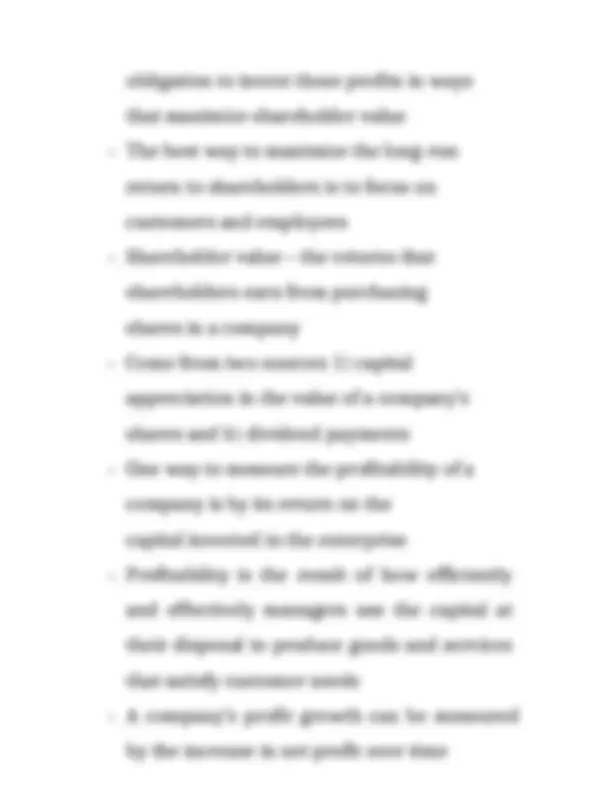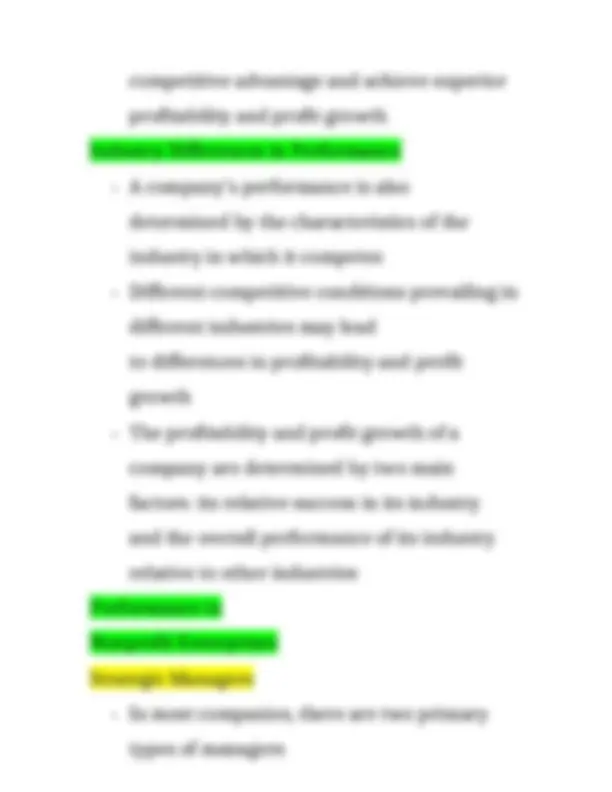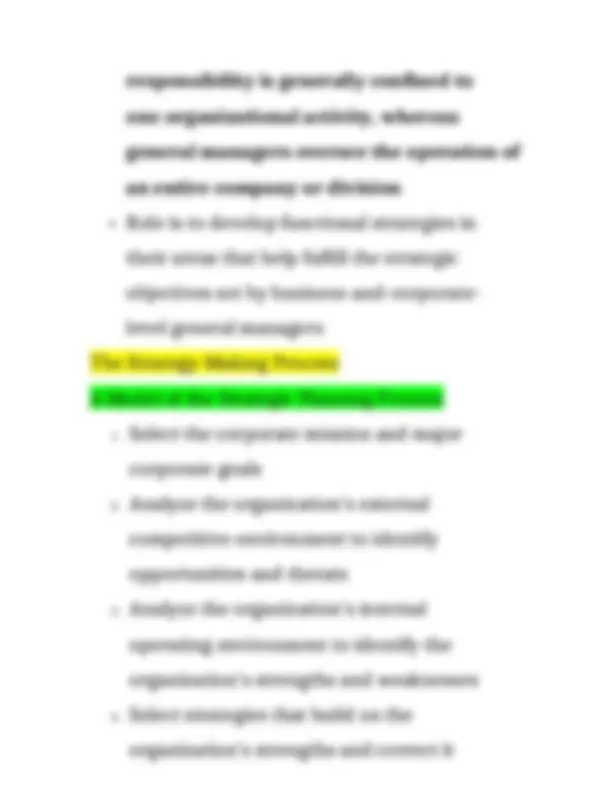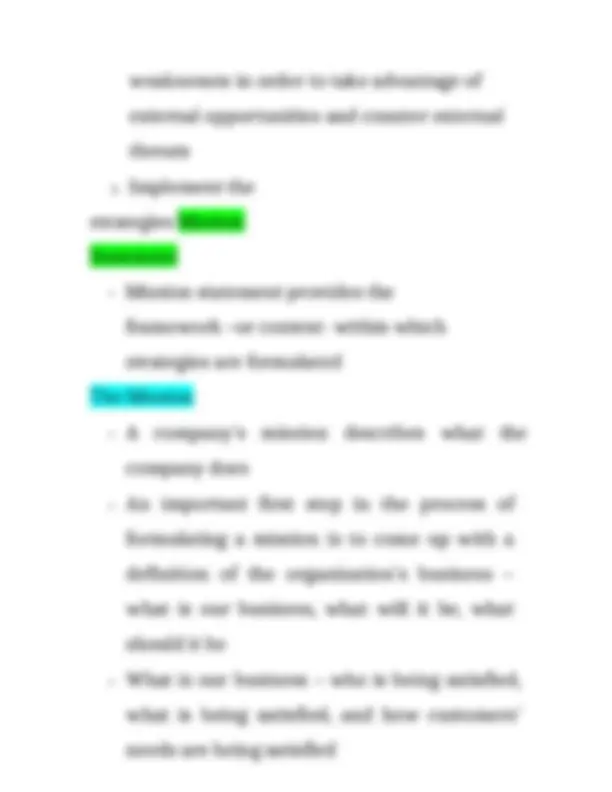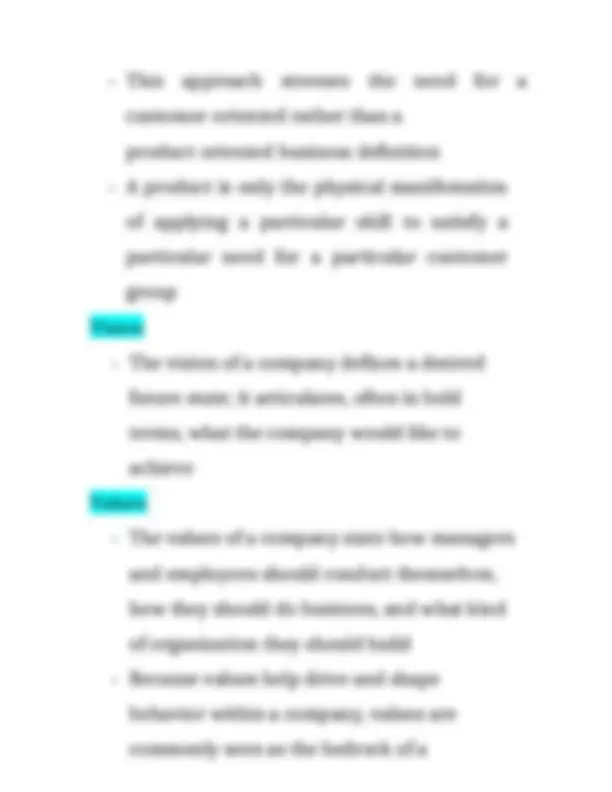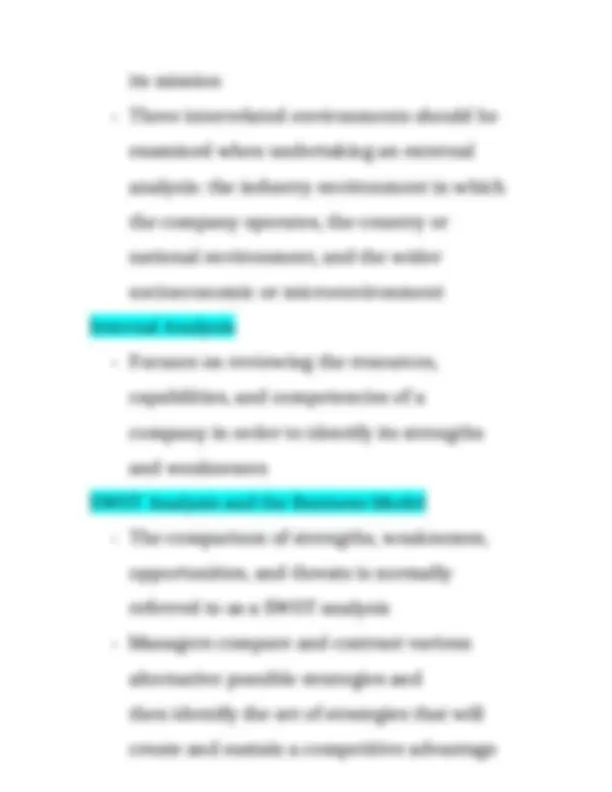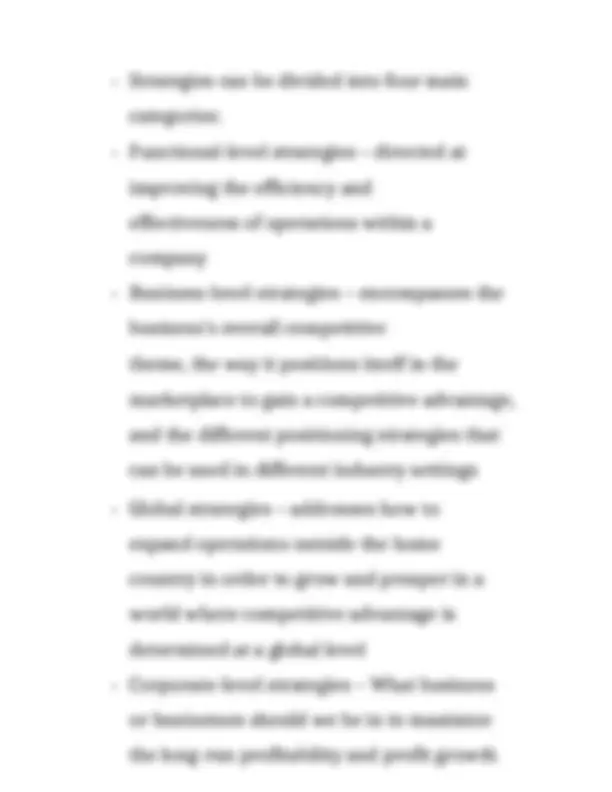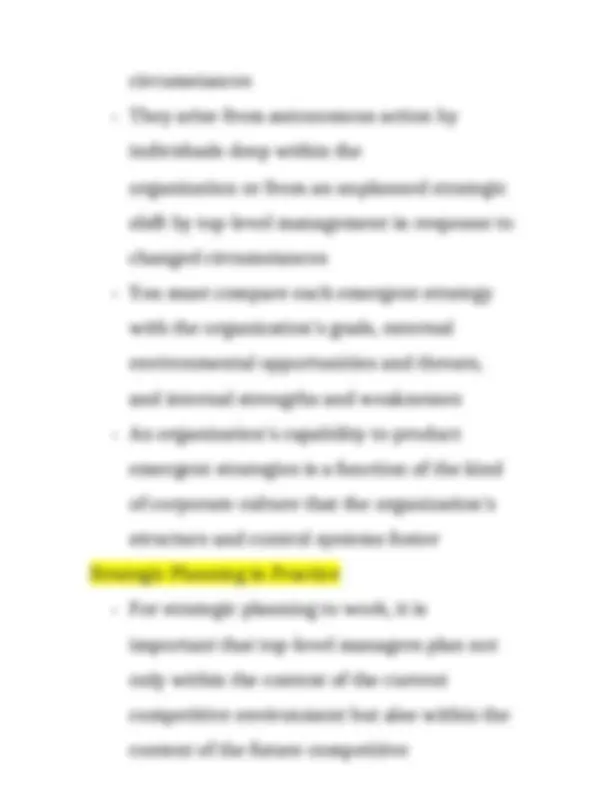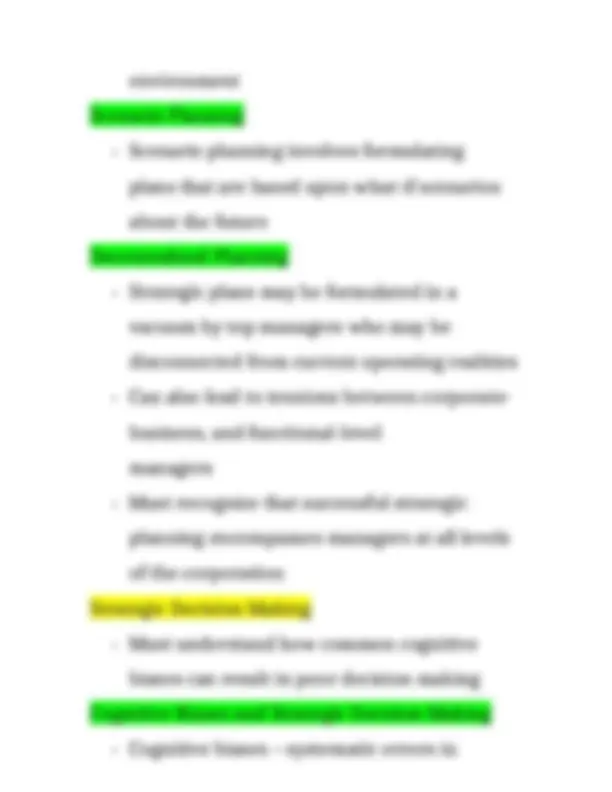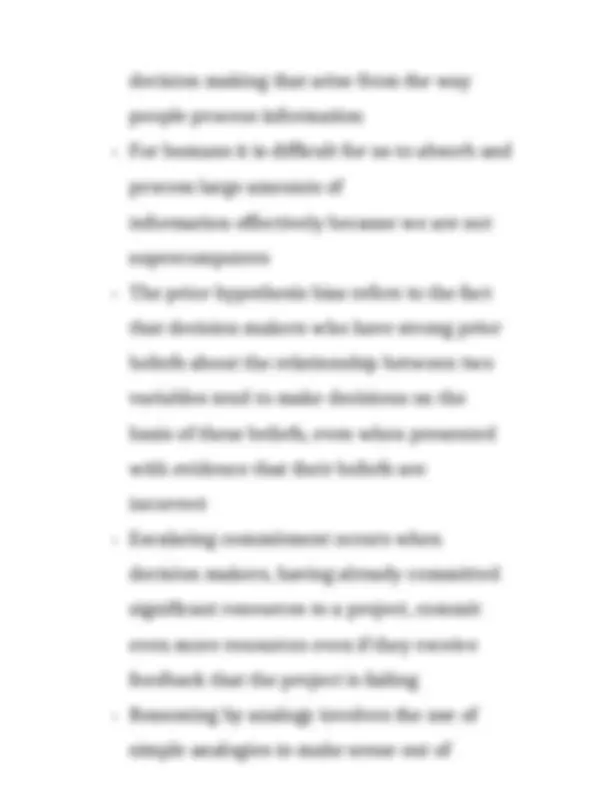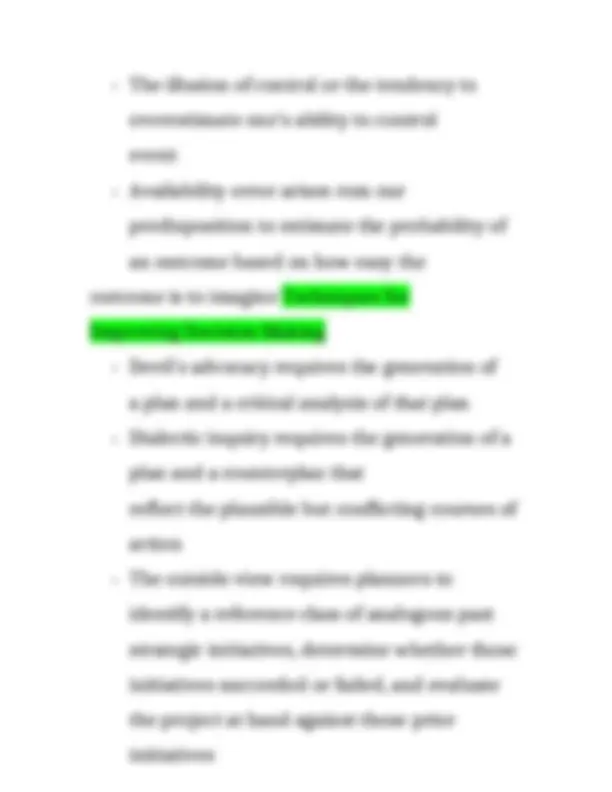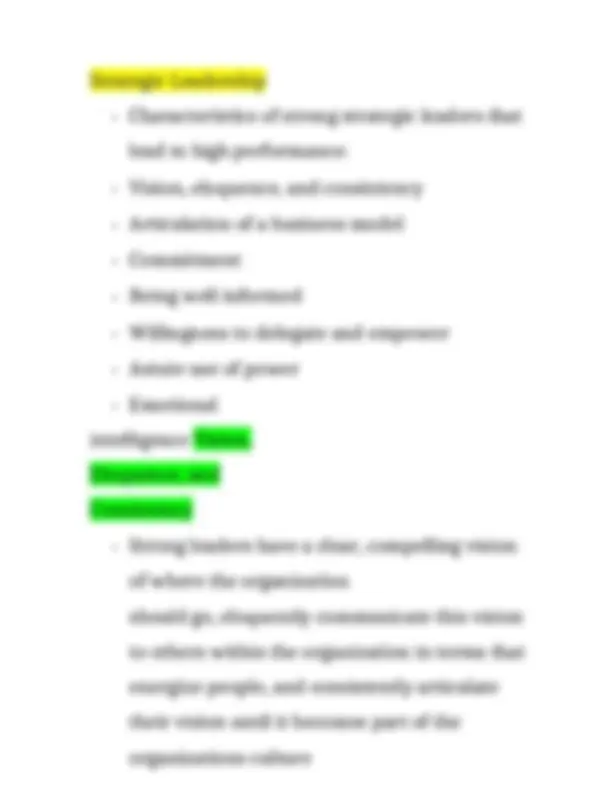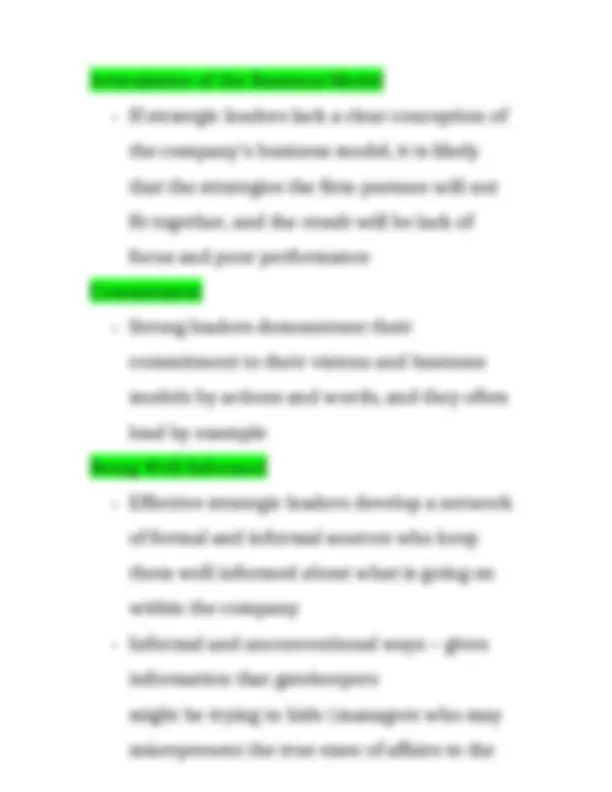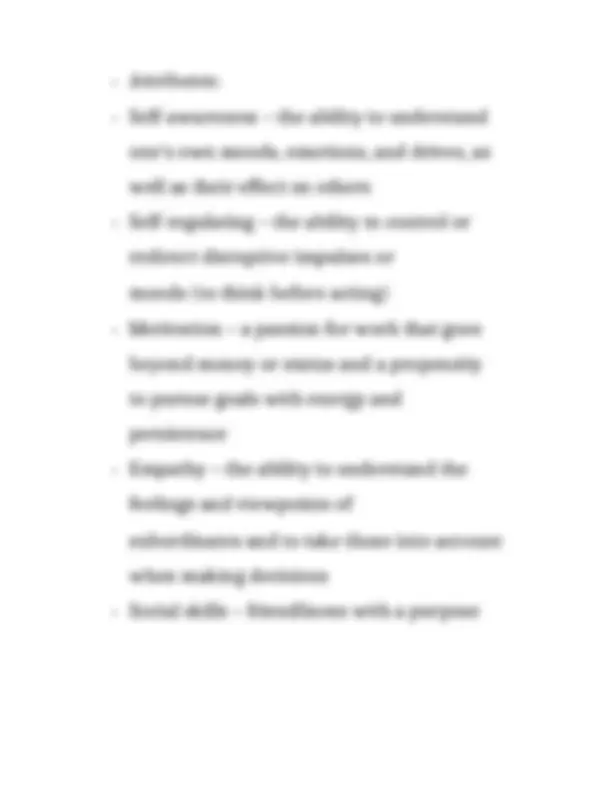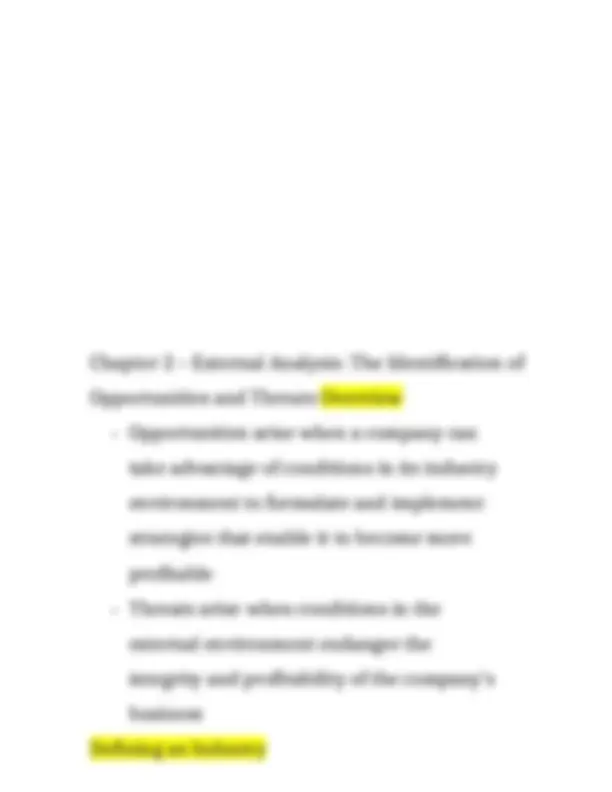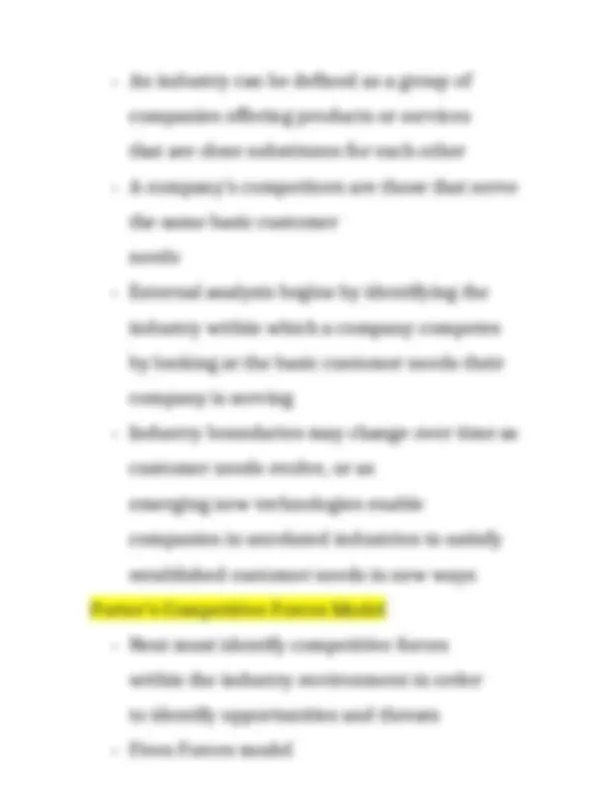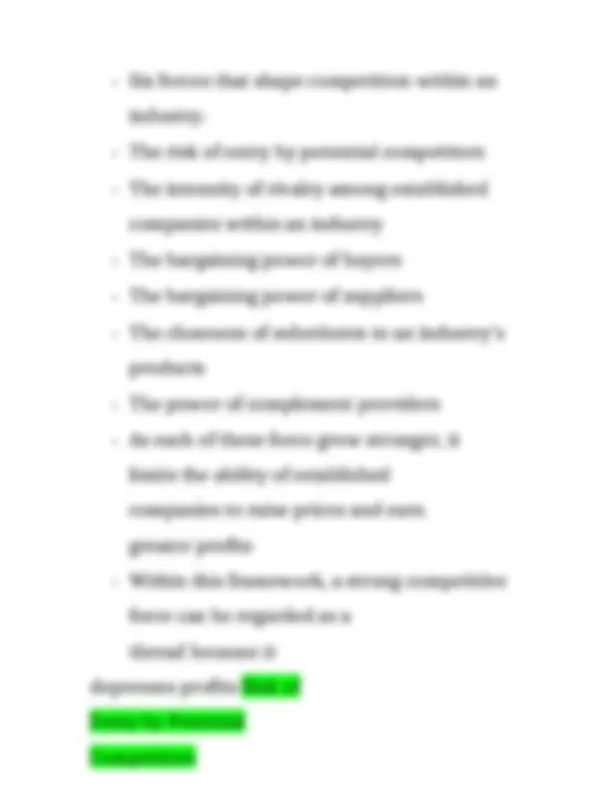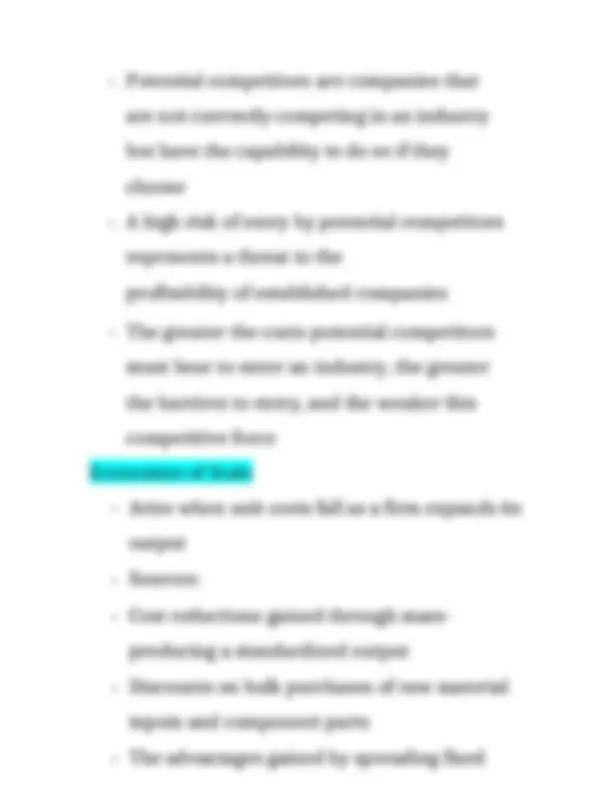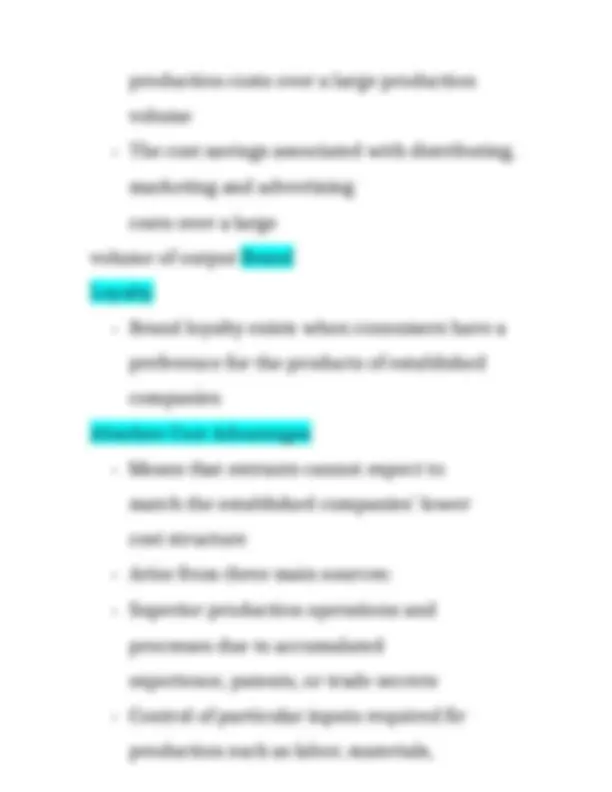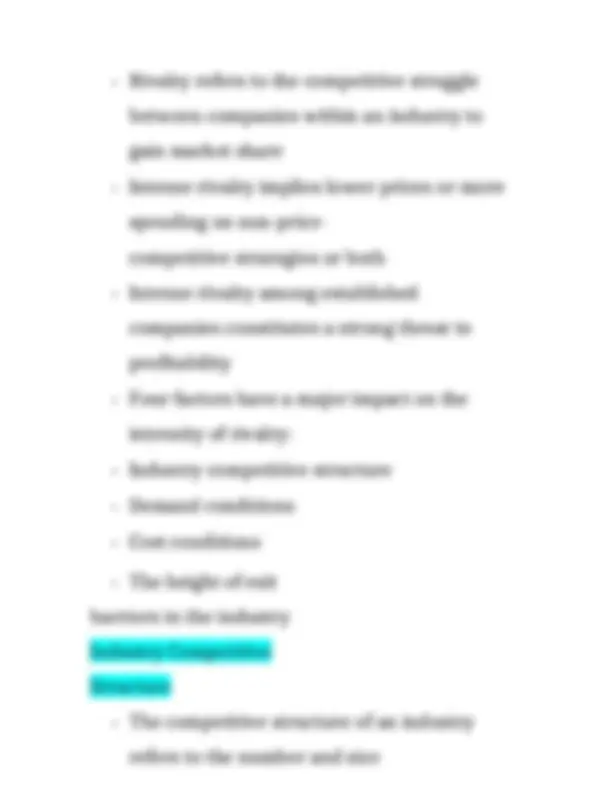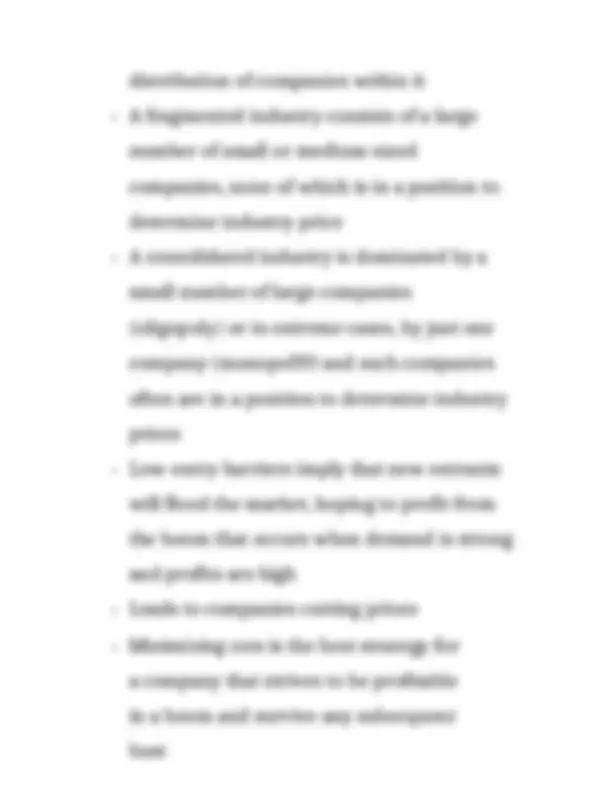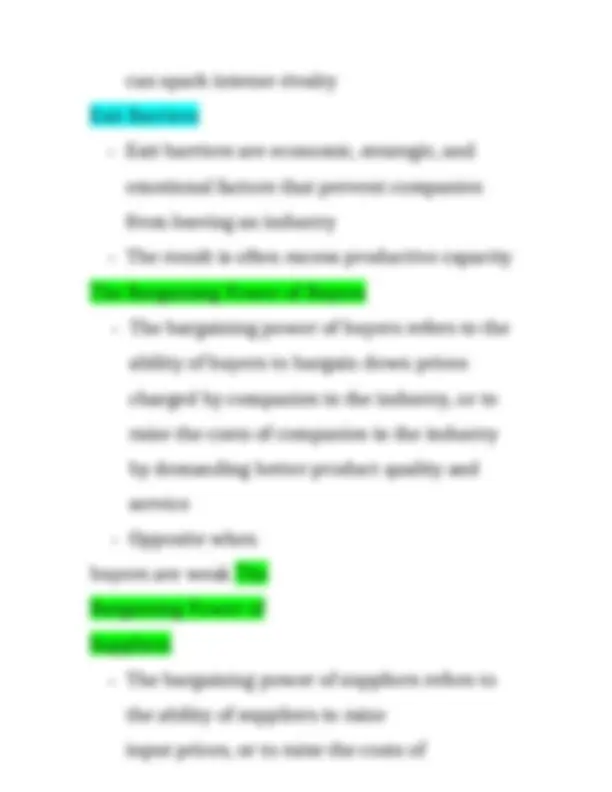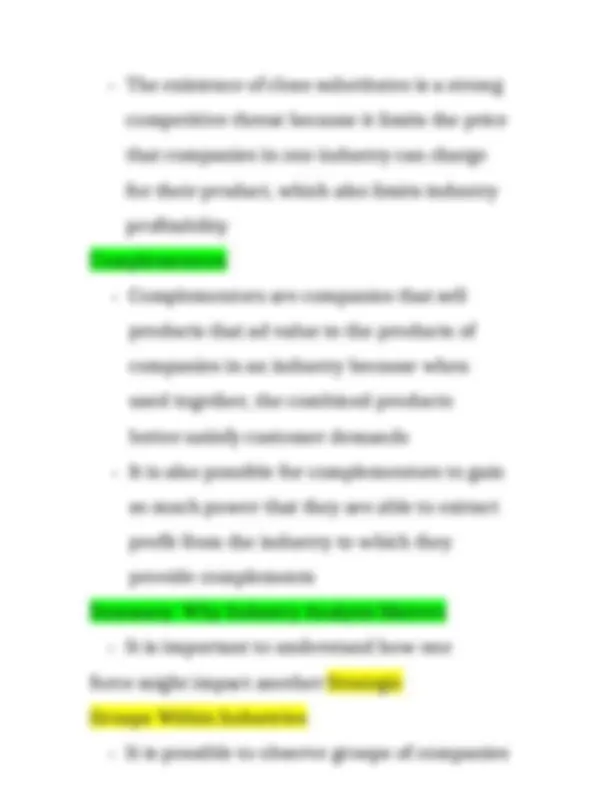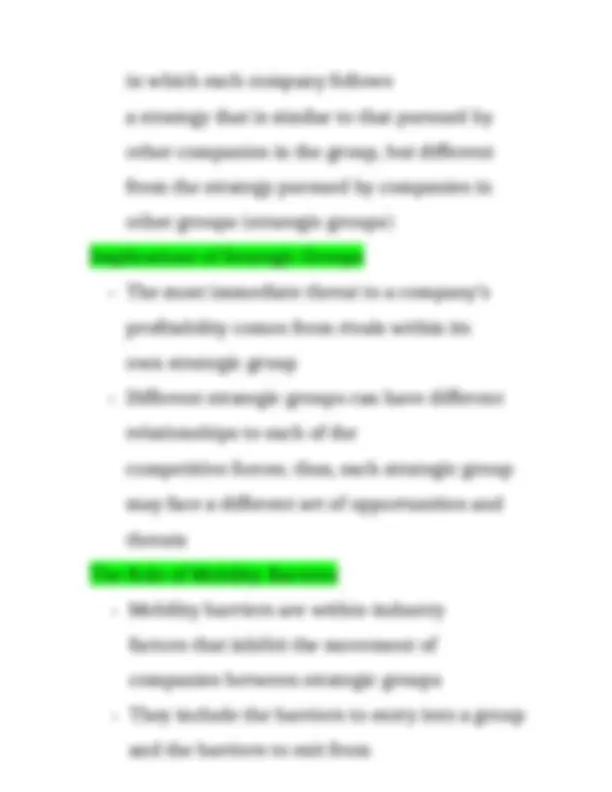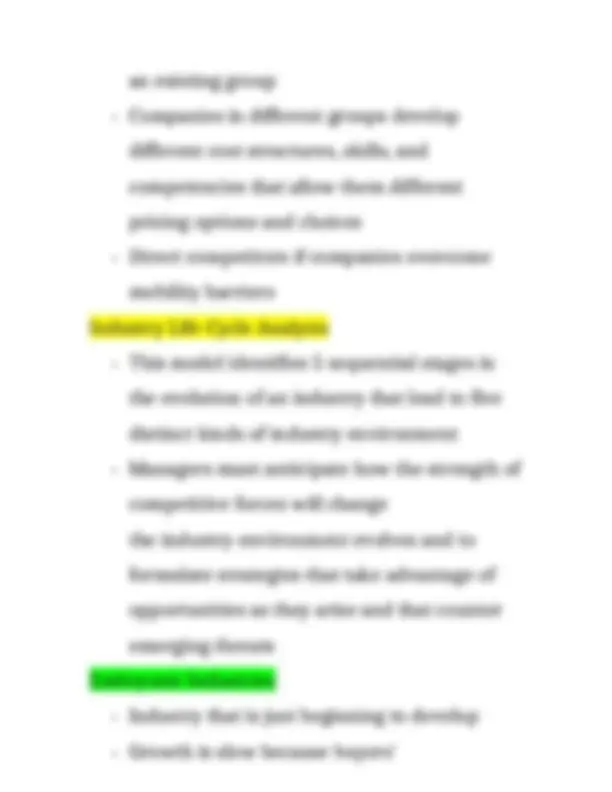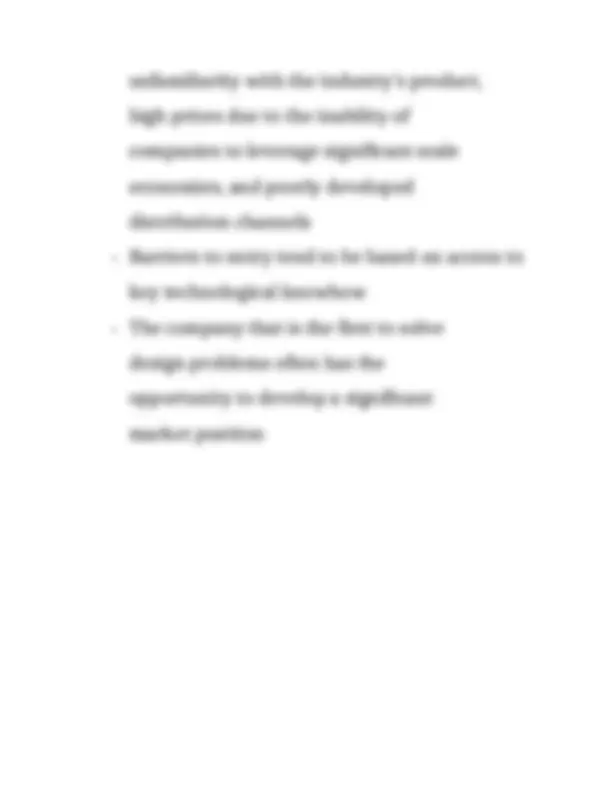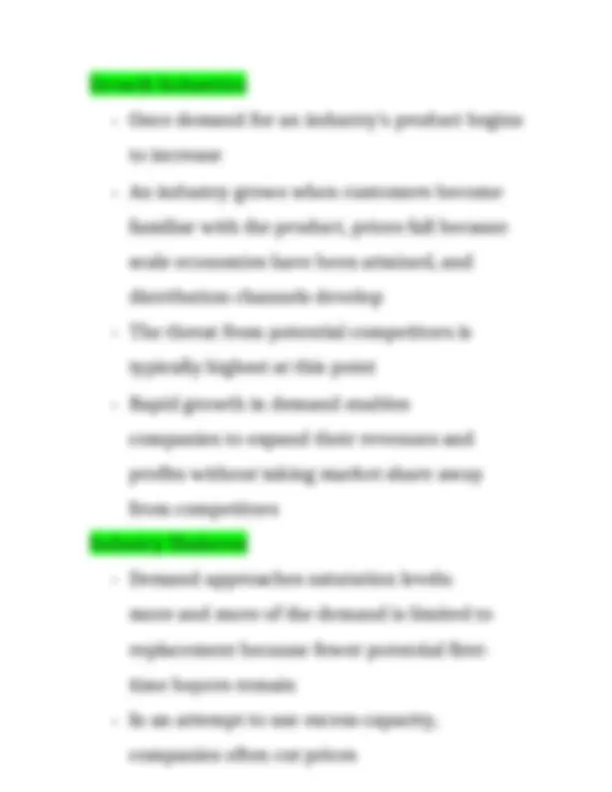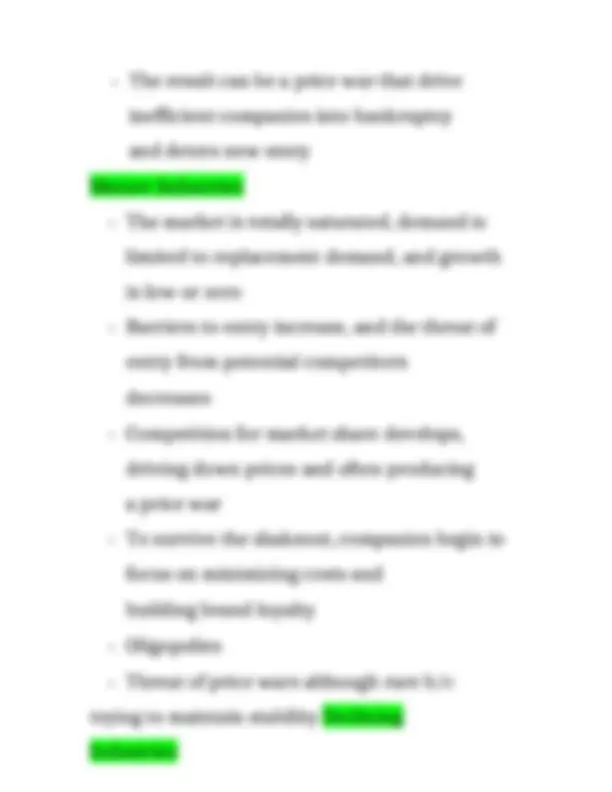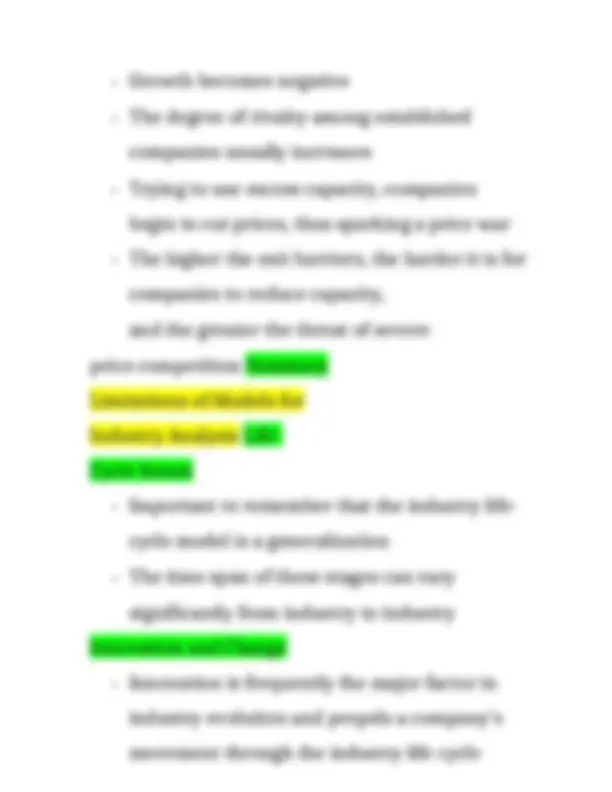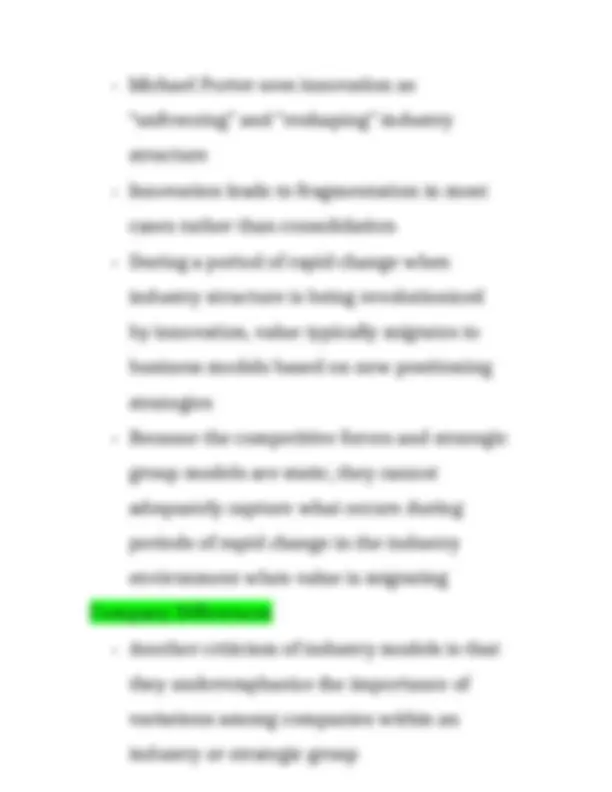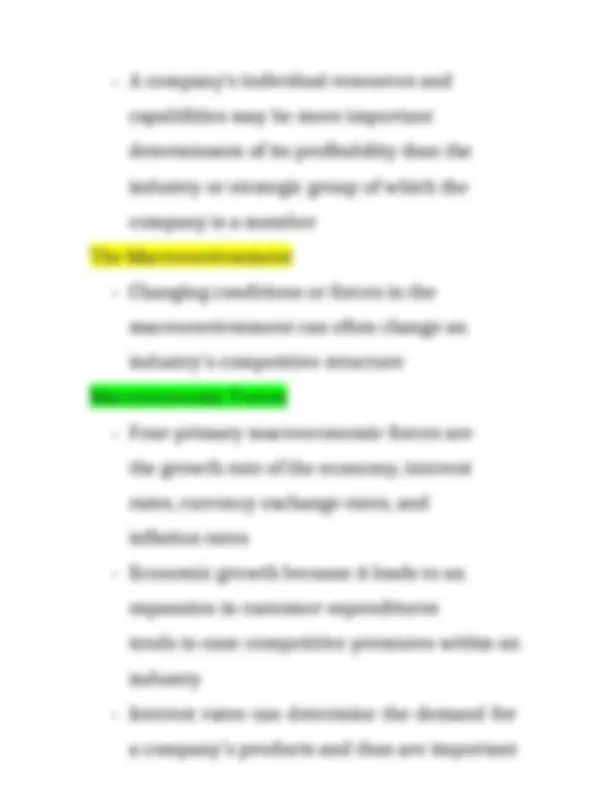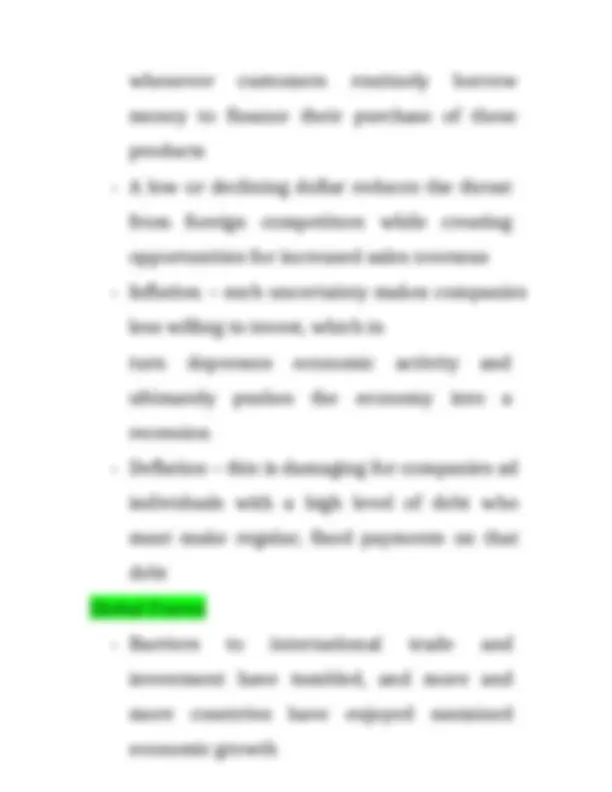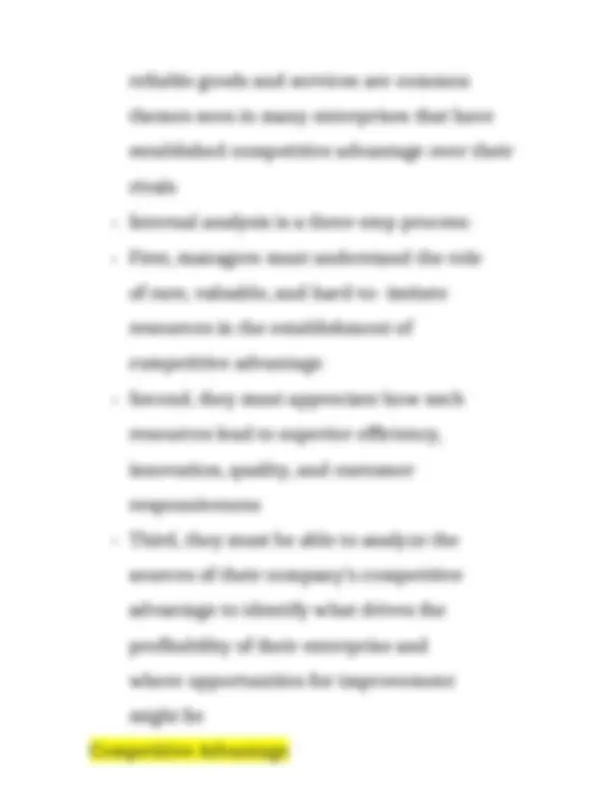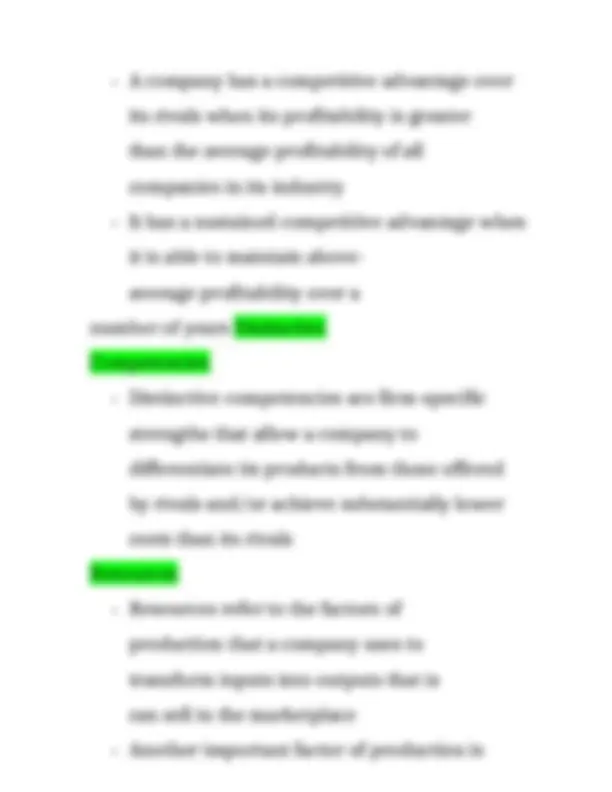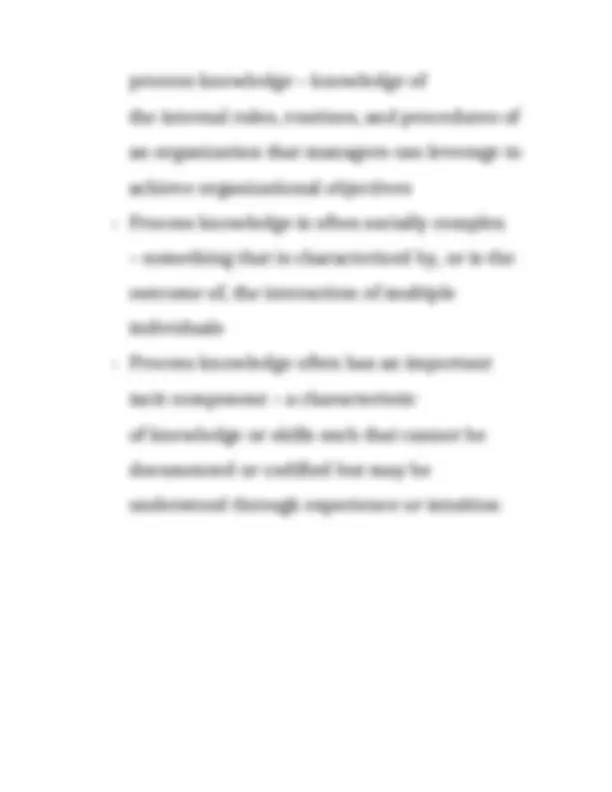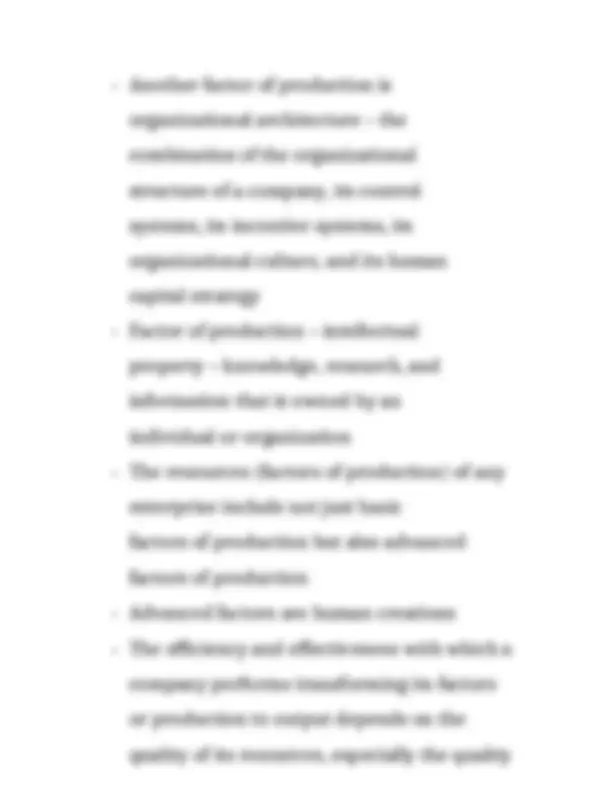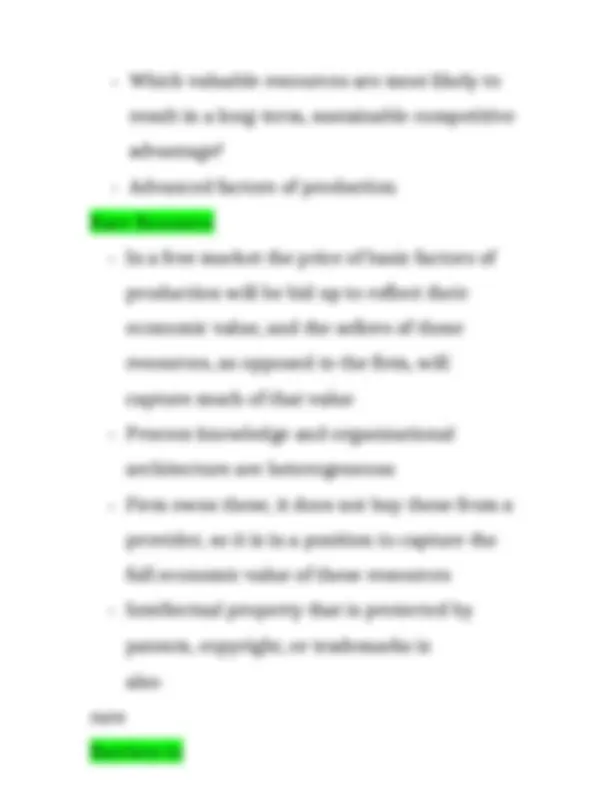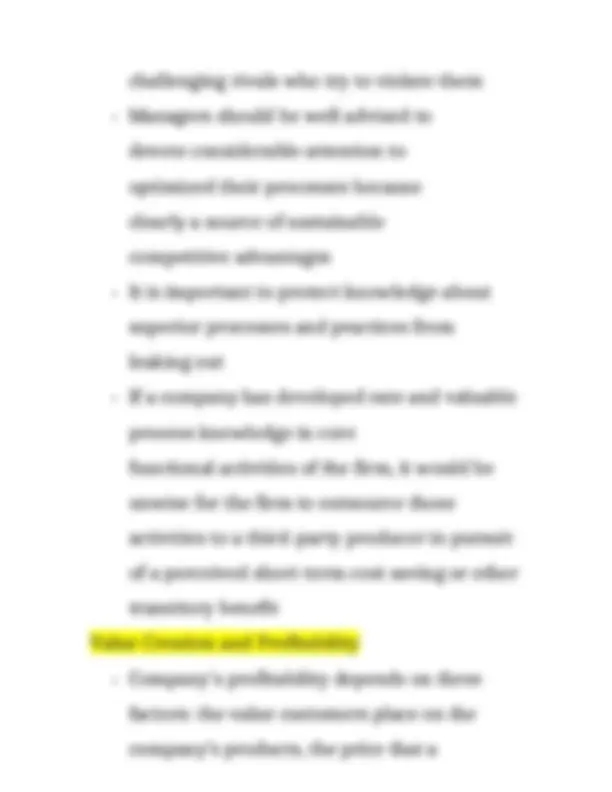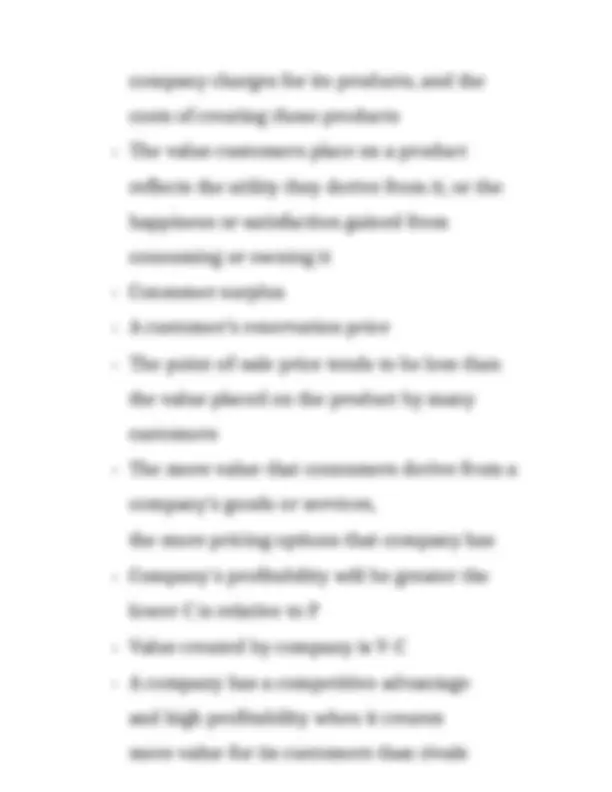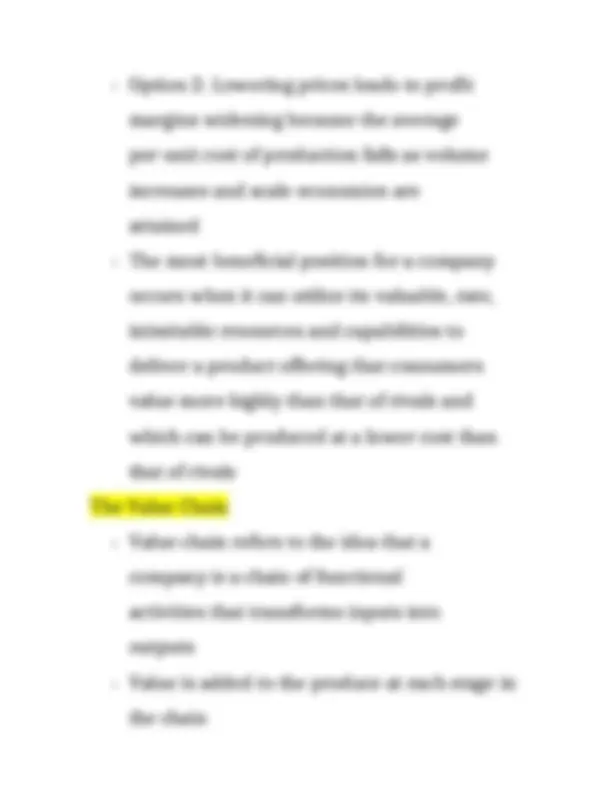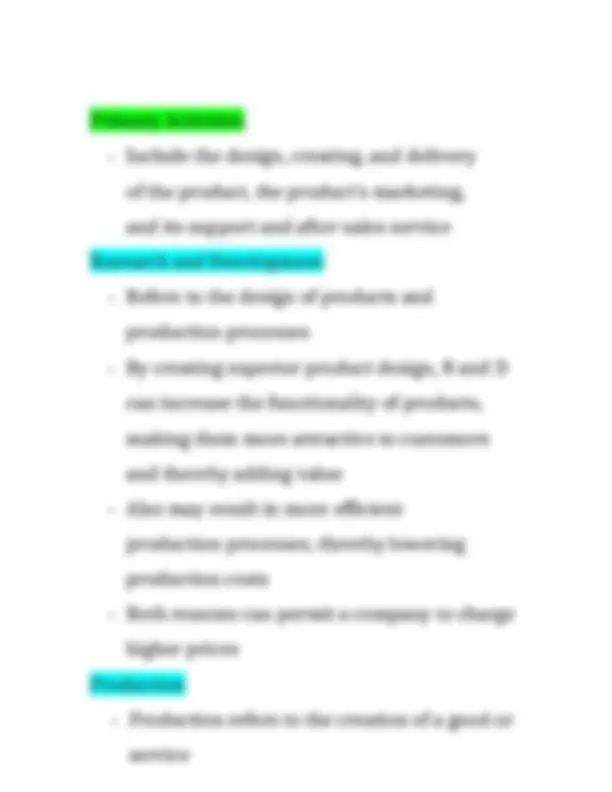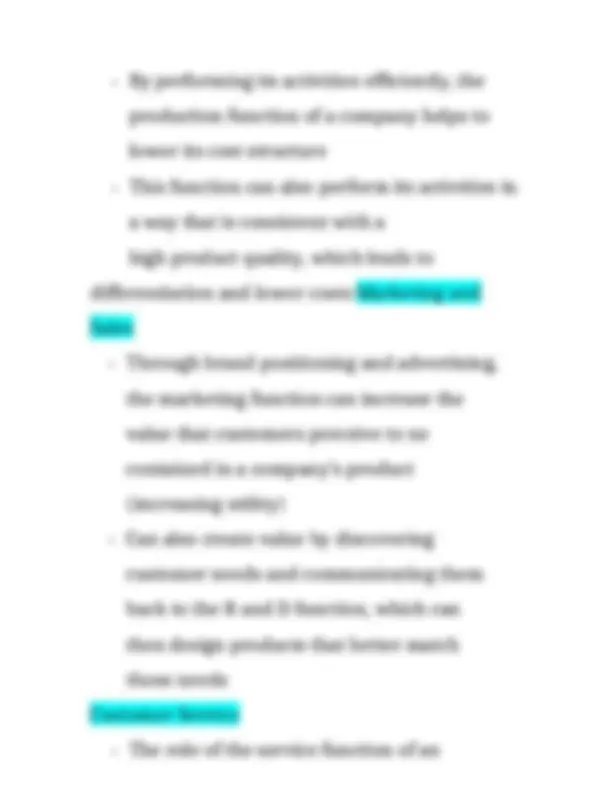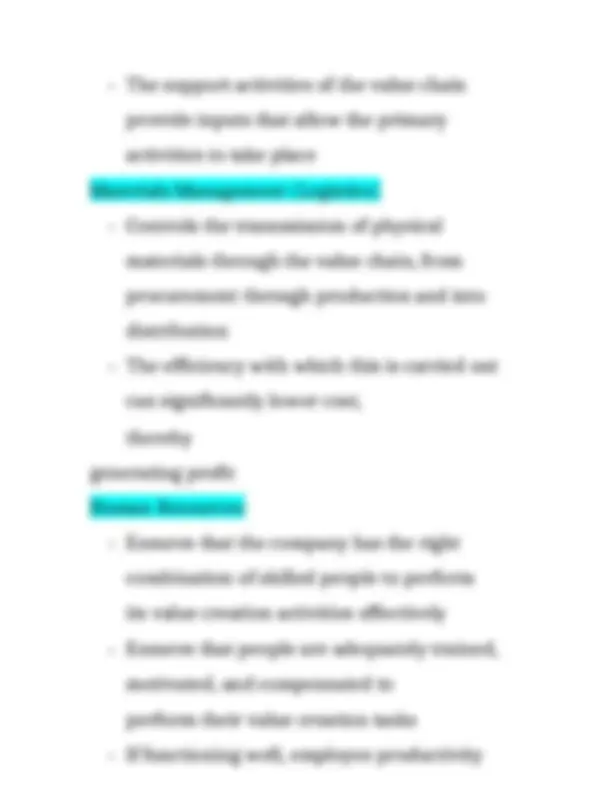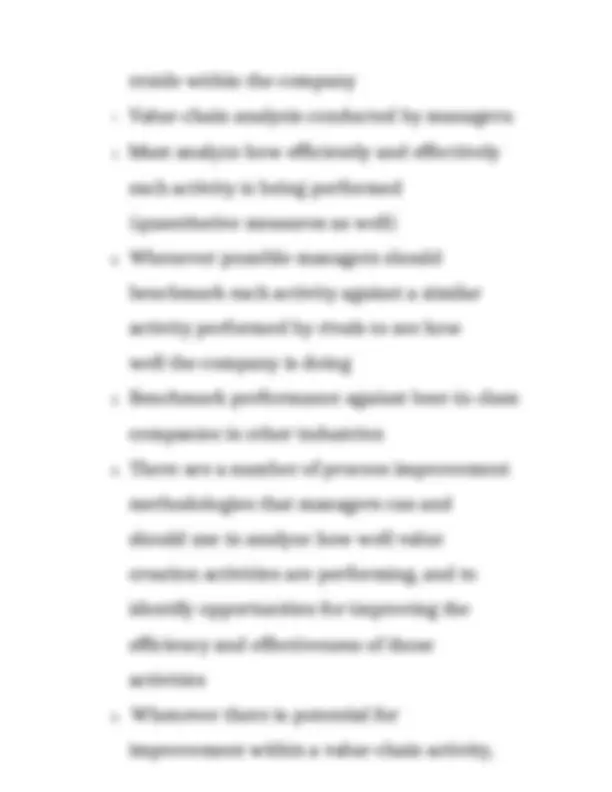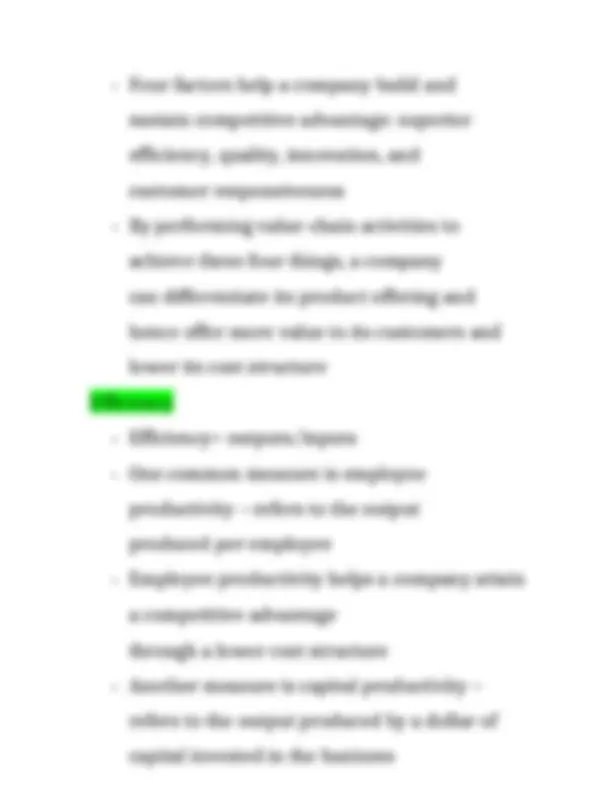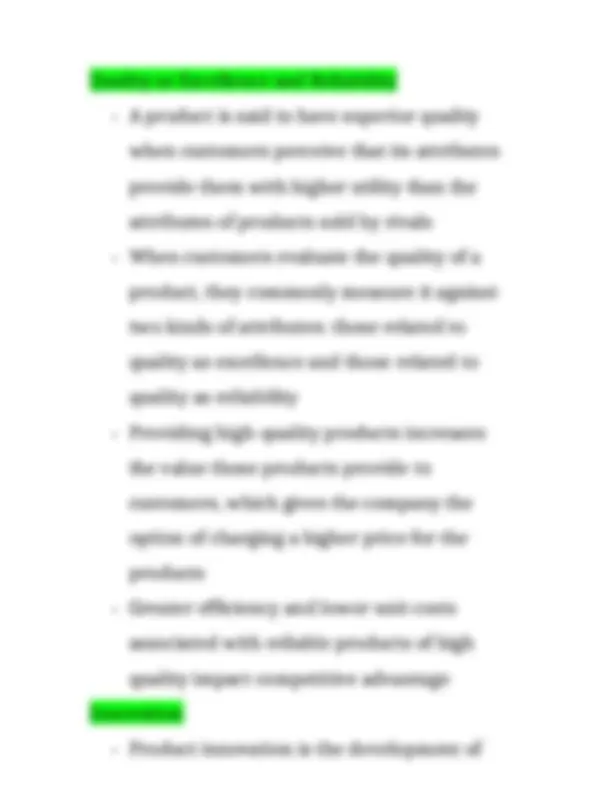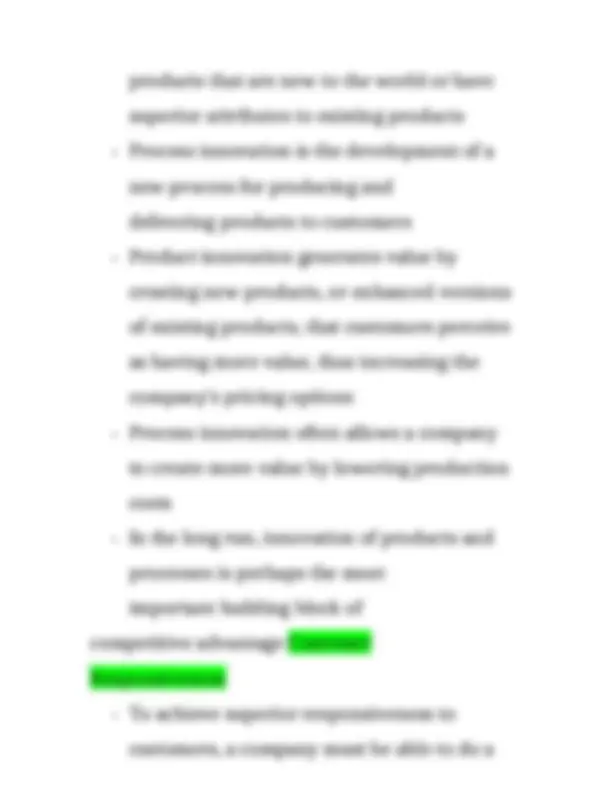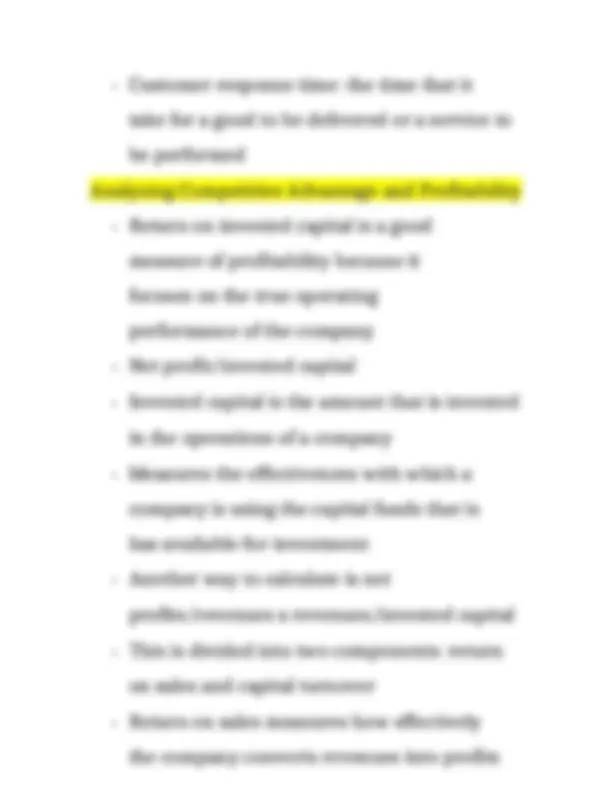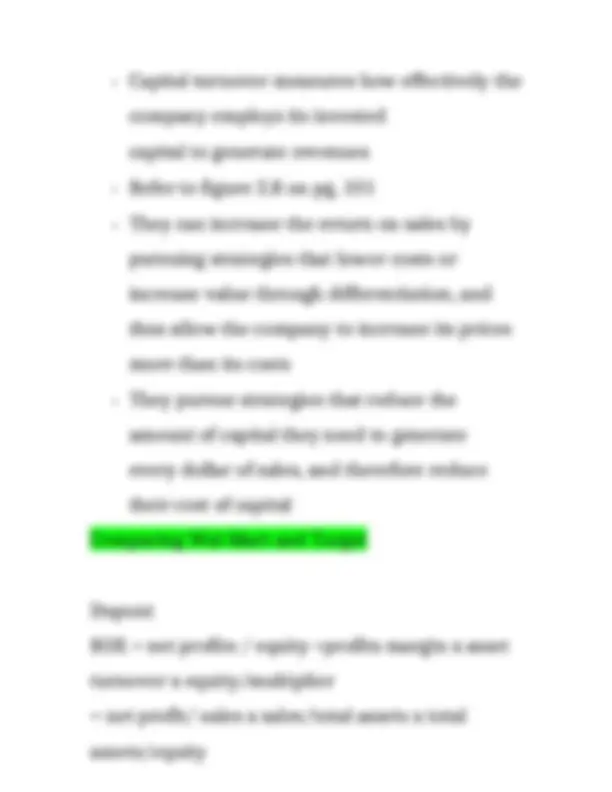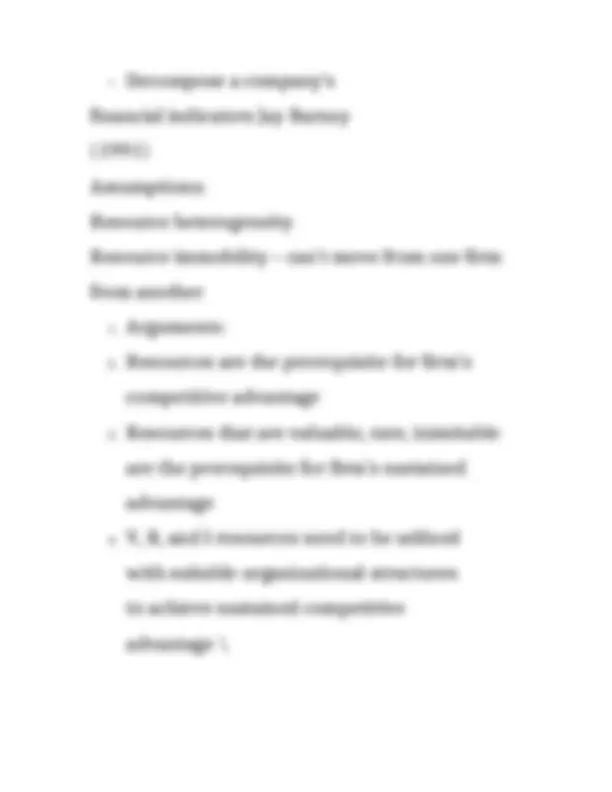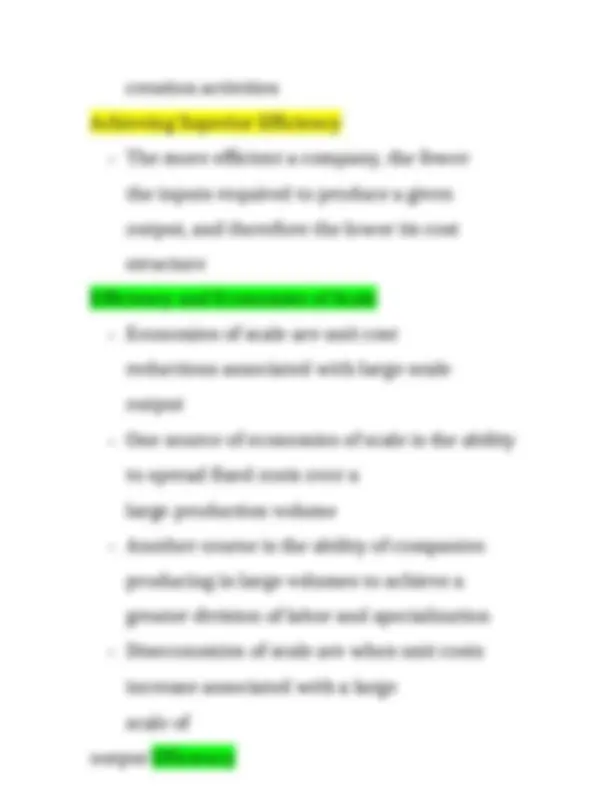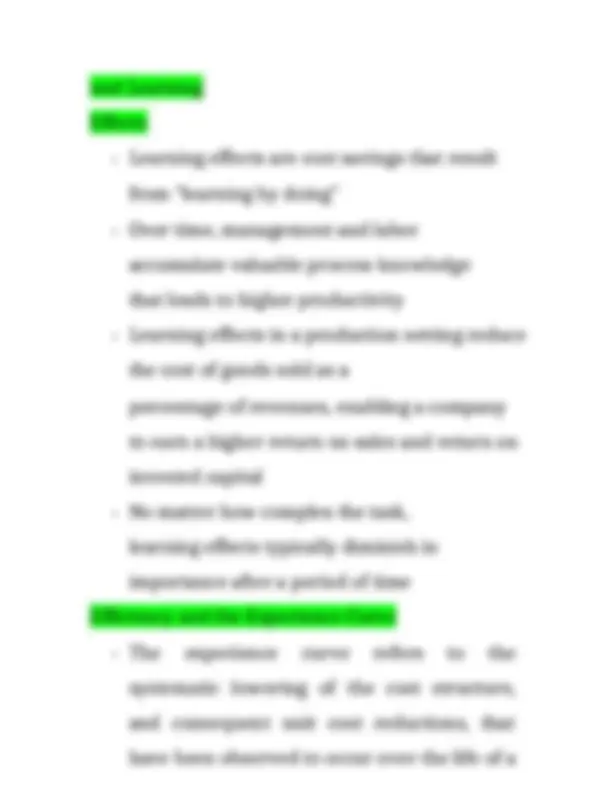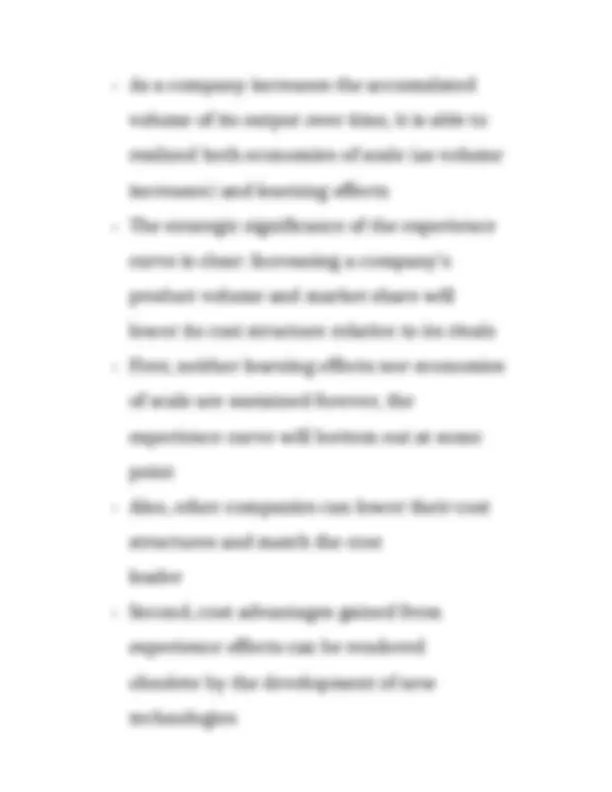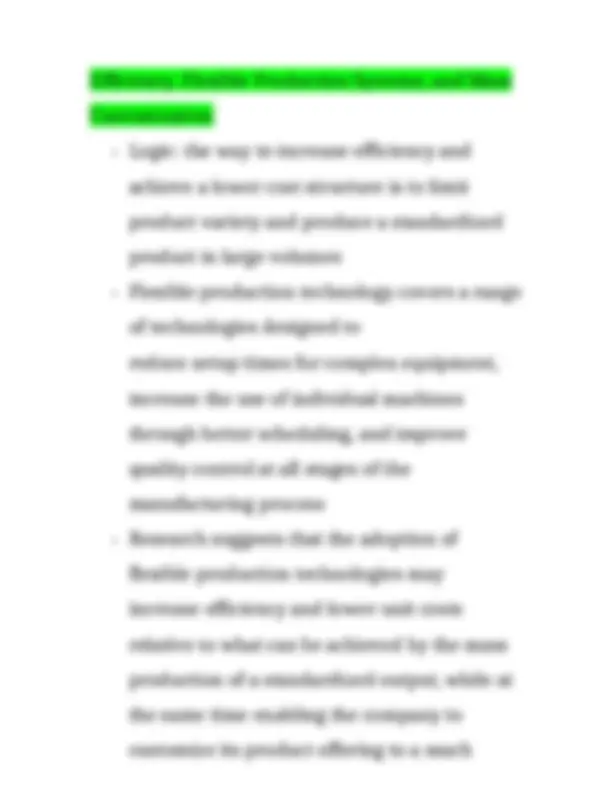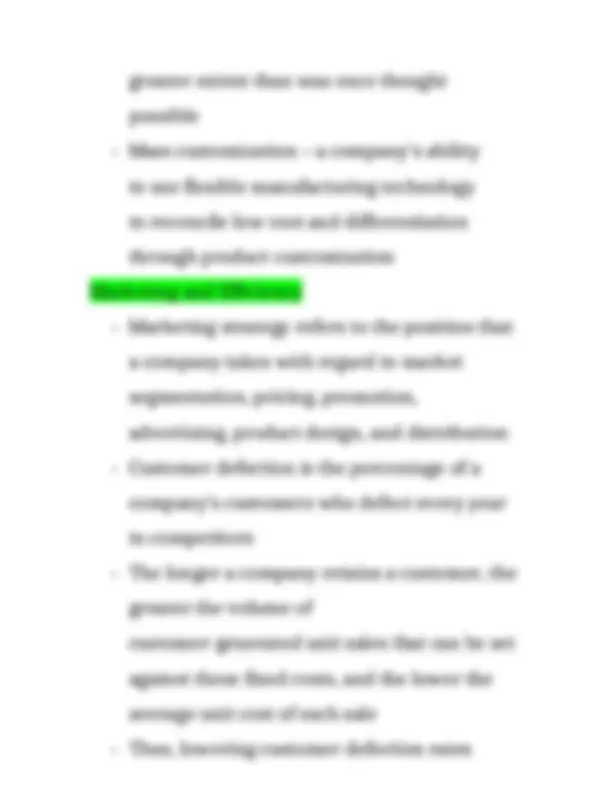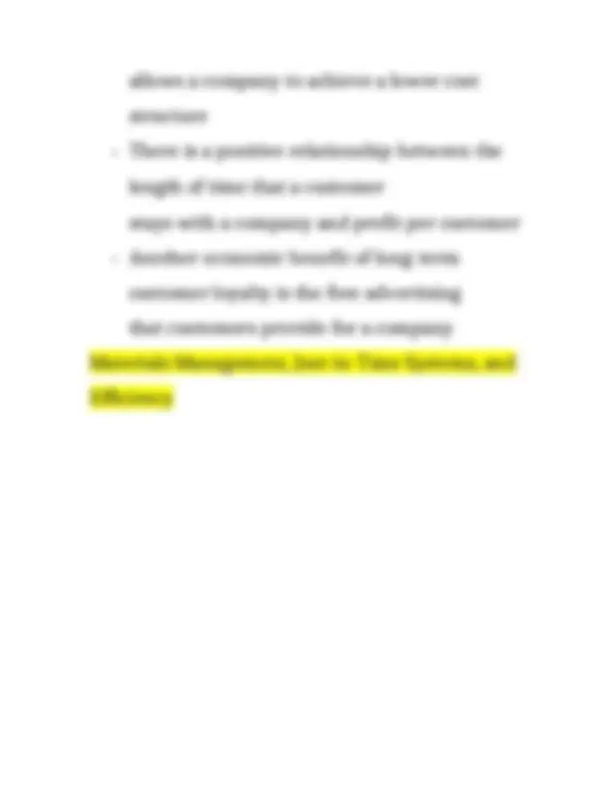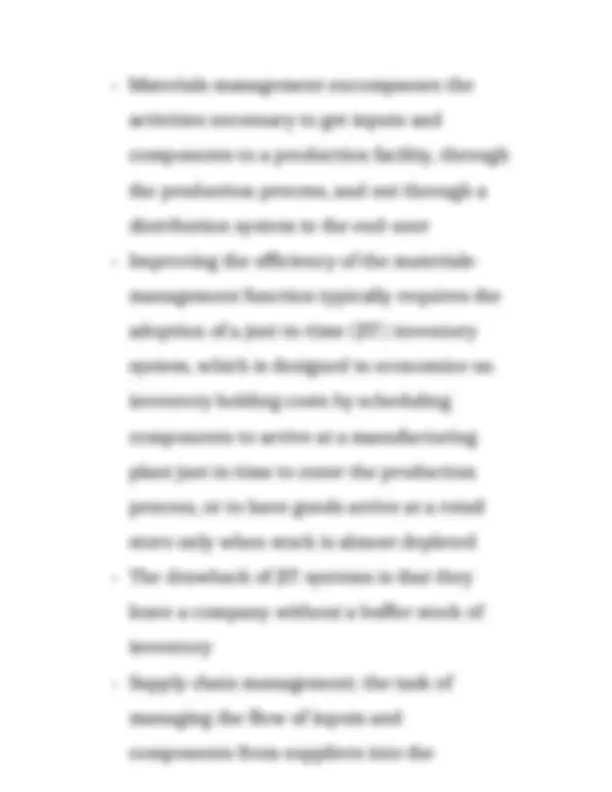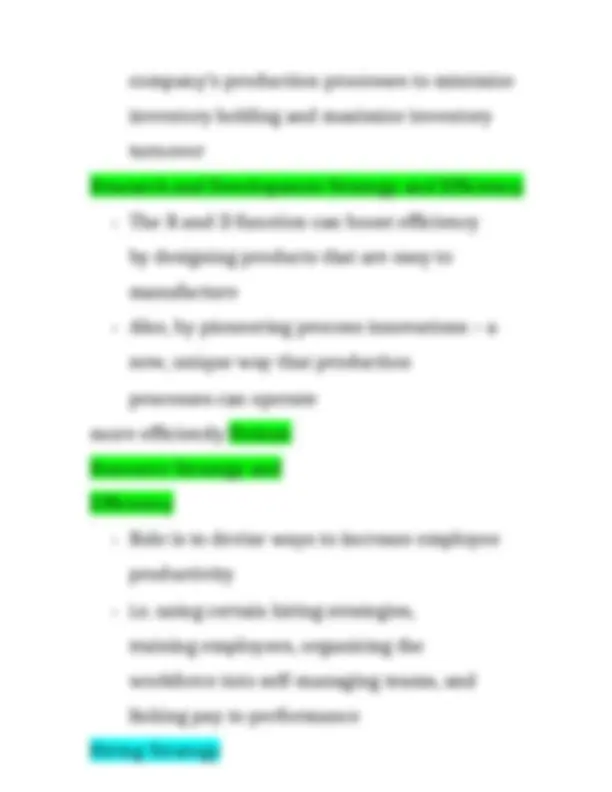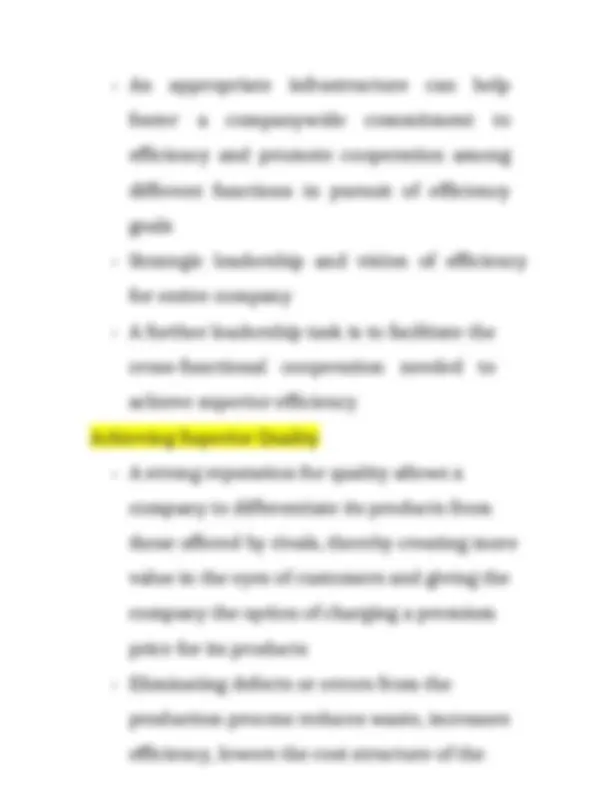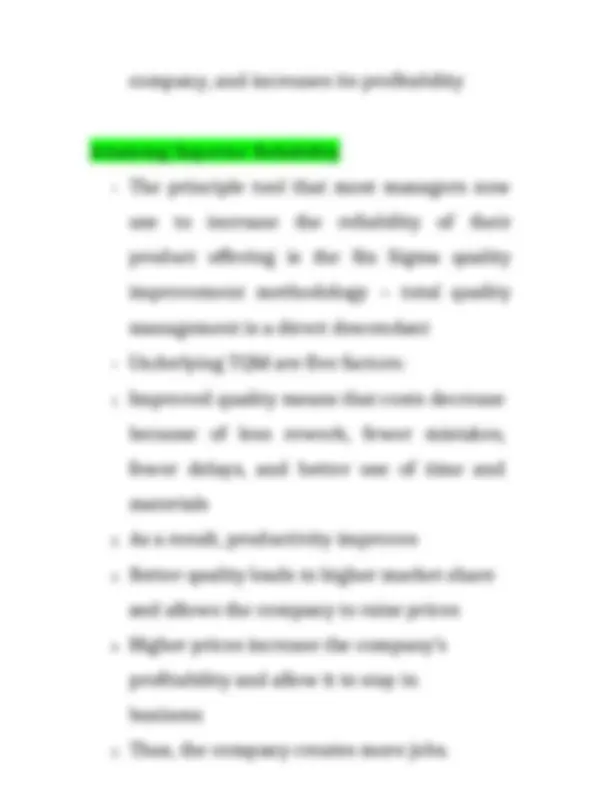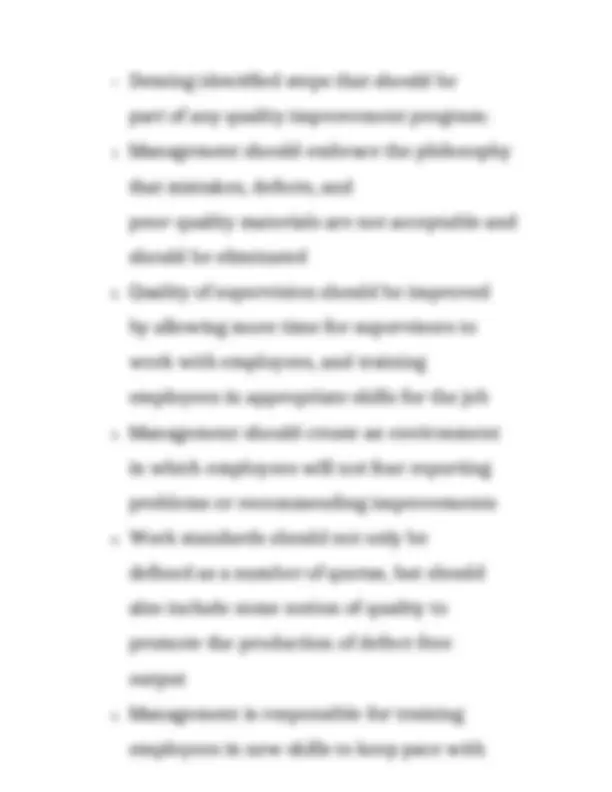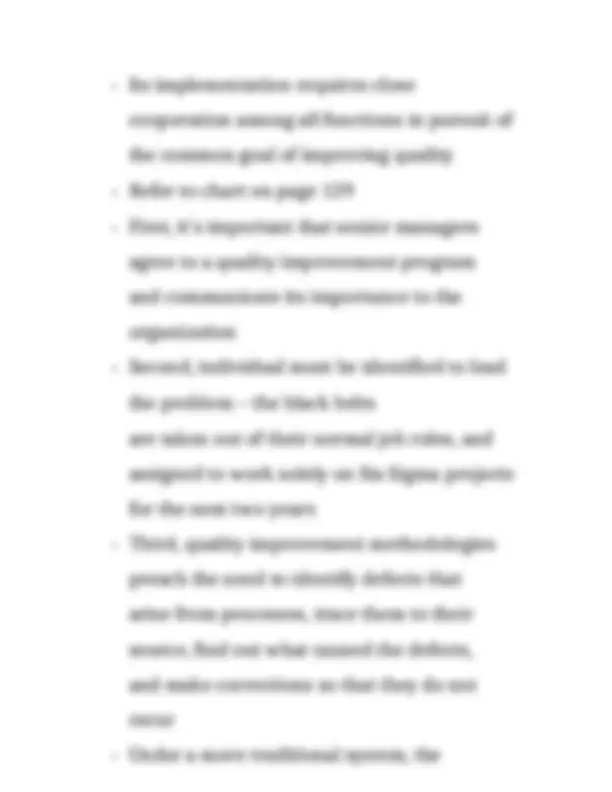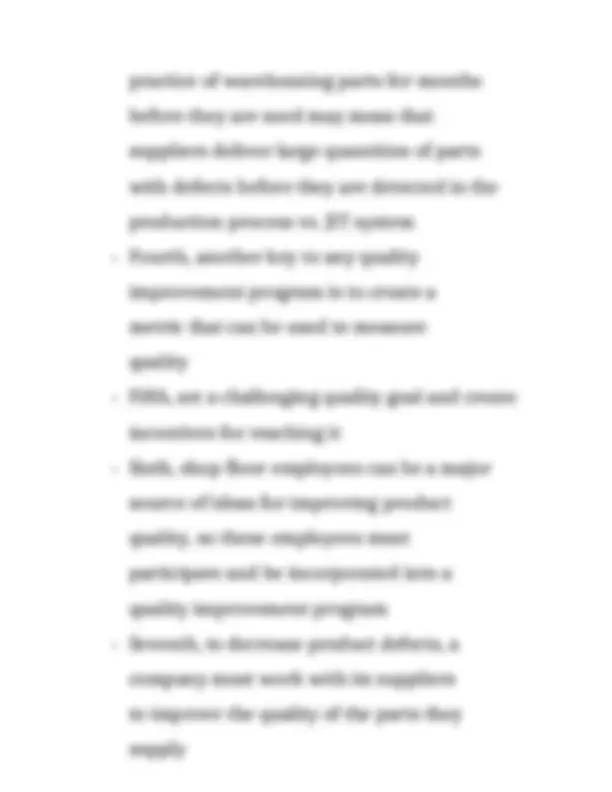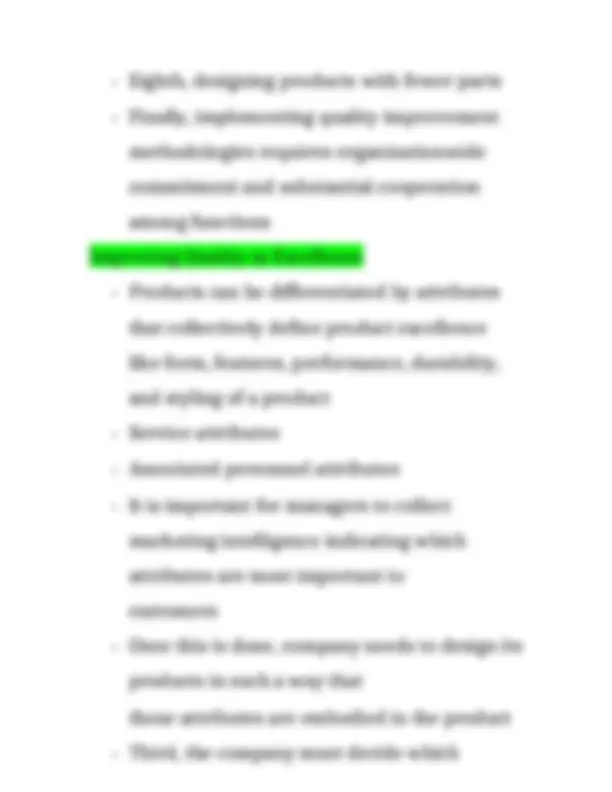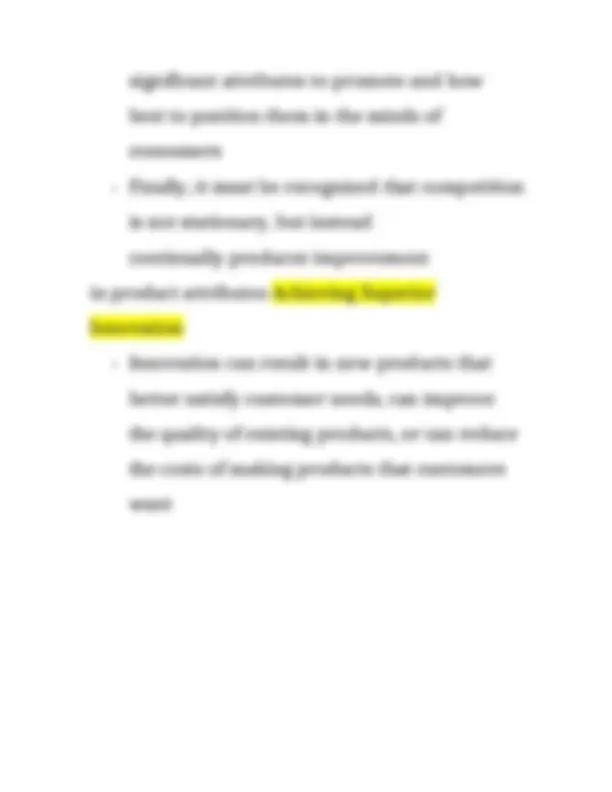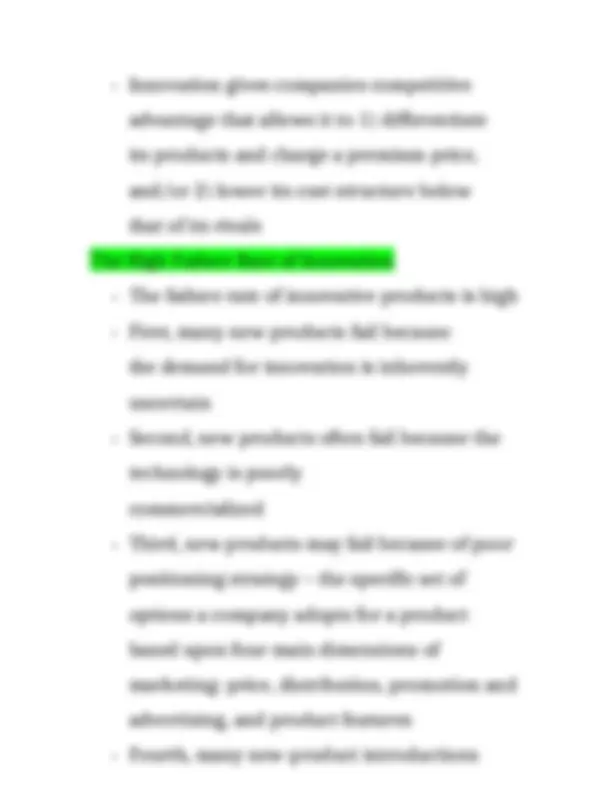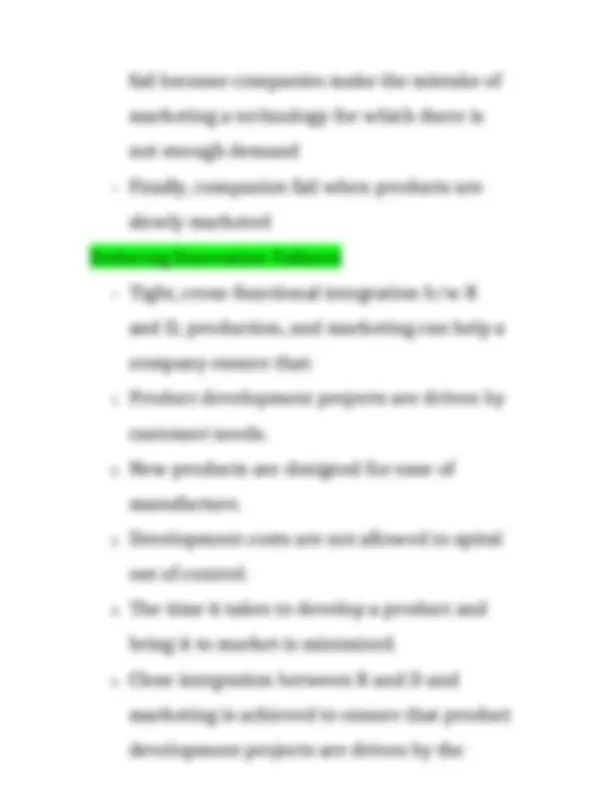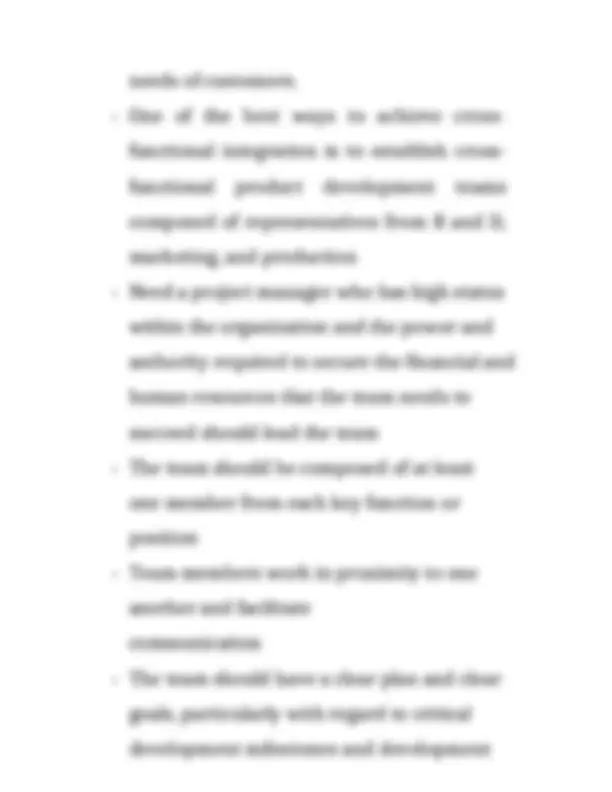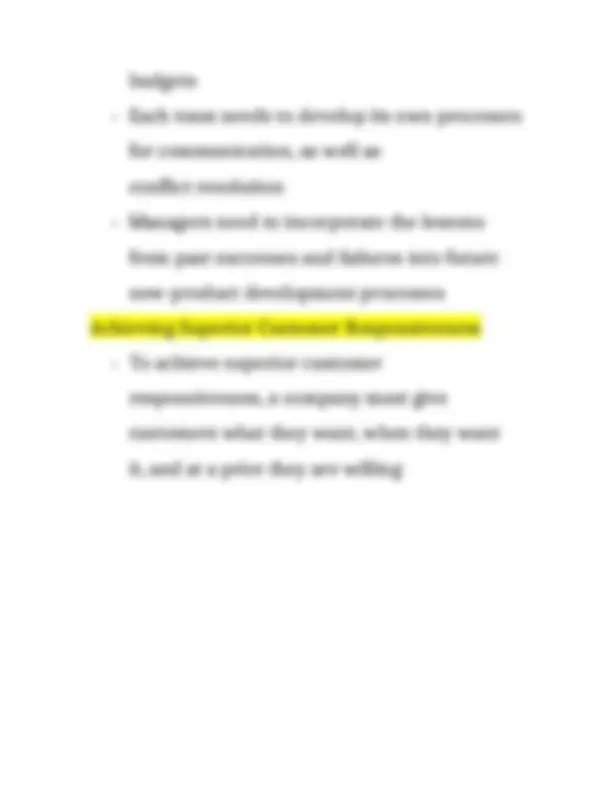Download Strategic Management notes compatibility and more Exams Business Management and Analysis in PDF only on Docsity!
Strategic Management notes compatibility Chapter 1 – Strchaategic Leadership: Managing the Strategy-Making Process for Competitive Advantage Overview
- A strategy is a set of related actions that managers take to increase their company’s performance
- If a company’s strategies result in superior performance, it is said to have a competitive advantage
- Strategic leadership is about how to most effectively manage a company’s strategy- making process to crease competitive advantage
- Strategy formulation is the task of selecting strategies
- Strategy implementation is putting
strategies into action Strategic Leadership, Competitive Advantage, and superior Performance
- To increase shareholder value. Managers must pursue strategies that increase the profitability of the company and ensure that profits grow Superior Performance
- Maximizing shareholder value is the main goal for two reasons:
- Shareholders provide a company with the risk capital that enables managers to buy the resources needed to product and sell goods and services
- Risk capital is capital that cannot be revered if a company fails and goes bankrupt
- Shareholders are the legal owners of a corporation, and their shares therefore represent a claim on the profits generated by a company thus managers have an
- Together, profitability and profit growth are the principle drivers of shareholder value
- Goal: high profitability and sustainable profit growth Competitive advantage and a Company’s Business Model
- A company is said to have a competitive advantage over its rivals when its profitability and profit growth are greater than the average of other companies competing for the same set of customers
- A company has a sustained competitive advantage when its strategies enable it to maintain above-average profitability and profit growth for a number of years
- A business model is manager’s conception of how the set of strategies their company pursues work together as a congruent whole, enabling the company to gain a
competitive advantage and achieve superior profitability and profit growth Industry Differences in Performance
- A company’s performance is also determined by the characteristics of the industry in which it competes
- Different competitive conditions prevailing in different industries may lead to differences in profitability and profit growth
- The profitability and profit growth of a company are determined by two main factors: its relative success in its industry and the overall performance of its industry relative to other industries Performance in Nonprofit Enterprises Strategic Managers
- In most companies, there are two primary types of managers
whole organization
- Corporate-level managers also provide a link between the people who oversee the strategic development of a firm an those who own it (the shareholders) Business-Level Managers
- A business unit is a self-contained division that provides a product or service for a particular market
- The strategic roles of these managers is to translate the general statements of direction and intent from the corporate level into concrete strategies for individual businesses Functional-Level Managers
- Functional-level managers are responsible for the specific business functions or operations found within a company or one of its divisions - Functional manager’s sphere of
responsibility is generally confined to one organizational activity, whereas general managers oversee the operation of an entire company or division
- Role is to develop functional strategies in their areas that help fulfill the strategic objectives set by business-and-corporate- level general managers The Strategy-Making Process A Model of the Strategic Planning Process
- Select the corporate mission and major corporate goals
- Analyze the organization’s external competitive environment to identify opportunities and threats
- Analyze the organization’s internal operating environment to identify the organization’s strengths and weaknesses
- Select strategies that build on the organization’s strengths and correct it
- This approach stresses the need for a customer-oriented rather than a product-oriented business definition
- A product is only the physical manifestation of applying a particular skill to satisfy a particular need for a particular customer group Vision
- The vision of a company defines a desired future state; it articulates, often in bold terms, what the company would like to achieve Values
- The values of a company state how managers and employees should conduct themselves, how they should do business, and what kind of organization they should build
- Because values help drive and shape behavior within a company, values are commonly seen as the bedrock of a
company’s organization culture: the set of values, norms, and standards that control how employees work to achieve an organization’s mission and goals
- Researchers identified a set of values associated with high-performing organizations that help companies achieve superior financial performance through their impact on employee behavior 1: respect for the interests of key organization stakeholders and 2) encouragement of leadership and entrepreneurial behavior by mid0and lower-level managers and 3) a willingness to support change efforts within the organization contributed to high performance Major Goals
- A goal is the precise, measurable, desired future state that a company attempts to realize
its mission
- Three interrelated environments should be examined when undertaking an external analysis: the industry environment in which the company operates, the country or national environment, and the wider socioeconomic or microenvironment Internal Analysis
- Focuses on reviewing the resources, capabilities, and competencies of a company in order to identify its strengths and weaknesses SWOT Analysis and the Business Model
- The comparison of strengths, weaknesses, opportunities, and threats is normally referred to as a SWOT analysis
- Managers compare and contrast various alternative possible strategies and then identify the set of strategies that will create and sustain a competitive advantage
- Strategies can be divided into four main categories:
- Functional-level strategies – directed at improving the efficiency and effectiveness of operations within a company
- Business-level strategies – encompasses the business’s overall competitive theme, the way it positions itself in the marketplace to gain a competitive advantage, and the different positioning strategies that can be used in different industry settings
- Global strategies – addresses how to expand operations outside the home country in order to grow and prosper in a world where competitive advantage is determined at a global level
- Corporate-level strategies – What business or businesses should we be in to maximize the long-run profitability and profit growth
strategies are the result of a plan
- Several scholars have criticized the formal planning model for three main reasons 1) the unpredictability of the real world 2) the role that lower-level managers can play in the strategic management process and 3) the fact that many successful strategies are often the result of serendipity, not rational strategizing Strategy Making in an Unpredictable World
- In an unpredictable world, being able to respond quickly to changing circumstances, and to alter the strategies of the organization accordingly, is paramount Autonomous Action: Strategy Making by Lower- Level Managers
- An alternative view is that individual managers deep within an organization can exert a profound influence over the strategic
decision of the firm
- Top management may have an emotional commitment to the status quo and are often unable to see things from a different perspective Serendipity and Strategy
- Many successful strategies are not the result of well-thought-out plans but of serendipity – stumbling across good outcomes unexpectedly Intended and Emergent Strategies
- Realized strategy is the product of whatever planned strategies are actually put into action (the company’s deliberate strategies) and any unplanned, or emergent, strategies
- Many planned strategies are not implemented because on unpredicted changes in the environment
- Emergent strategies are the unplanned responses to unforeseen
environment Scenario Planning
- Scenario planning involves formulating plans that are based upon what-if scenarios about the future Decentralized Planning
- Strategic plans may be formulated in a vacuum by top managers who may be disconnected from current operating realities
- Can also lead to tensions between corporate- business, and functional-level managers
- Must recognize that successful strategic planning encompasses managers at all levels of the corporation Strategic Decision Making
- Must understand how common cognitive biases can result in poor decision making Cognitive Biases and Strategic Decision Making
- Cognitive biases – systematic errors in
decision making that arise from the way people process information
- For humans it is difficult for us to absorb and process large amounts of information effectively because we are not supercomputers
- The prior hypothesis bias refers to the fact that decision makers who have strong prior beliefs about the relationship between two variables tend to make decisions on the basis of these beliefs, even when presented with evidence that their beliefs are incorrect
- Escalating commitment occurs when decision makers, having already committed significant resources to a project, commit even more resources even if they receive feedback that the project is failing
- Reasoning by analogy involves the use of simple analogies to make sense out of

